- Society and Politics
- Art and Culture
- Biographies
- Publications


Great Trek 1835-1846
The Great Trek was a movement of Dutch-speaking colonists up into the interior of southern Africa in search of land where they could establish their own homeland, independent of British rule. The determination and courage of these pioneers has become the single most important element in the folk memory of Afrikaner Nationalism. However, far from being the peaceful and God-fearing process which many would like to believe it was, the Great Trek caused a tremendous upheaval in the interior for at least half a century.
The Voortrekkers
The Great Trek was a landmark in an era of expansionism and bloodshed, of land seizure and labour coercion. Taking the form of a mass migration into the interior of southern Africa, this was a search by dissatisfied Dutch-speaking colonists for a promised land where they would be 'free and independent people' in a 'free and independent state'.
The men, women and children who set out from the eastern frontier towns of Grahamstown, Uitenhage and Graaff-Reinet represented only a fraction of the Dutch-speaking inhabitants of the colony, and yet their determination and courage has become the single most important element in the folk memory of Afrikaner nationalism. However, far from being the peaceful and God-fearing process which many would like to believe it was, the Great Trek caused a tremendous social upheaval in the interior of southern Africa, rupturing the lives of hundreds of thousands of indigenous people. But this time the reports that reached the chiefs of the Sotho clans on the northern bank were more alarming: the white men were coming in their hundreds.
Threatened by the 'liberalism' of the new colonial administration, insecure about conflict on the eastern frontier and 'squeezed out' by their own burgeoning population, the Voortrekkers hoped to restore economic, cultural and political unity independent of British power. The only way they saw open to them was to leave the colony. In the decade following 1835, thousands migrated into the interior, organised in a number of trek parties under various leaders. Many of the Voortrekkers were trekboers (semi-nomadic pastoral farmers) and their mode of life made it relatively easy for them to pack their worldly possessions in ox-wagons and leave the colony forever.
After crossing the Orange River the trekkers were still not totally out of reach of the Cape judiciary - in terms of the Cape of Good Hope Punishment Act (1836), they were liable for all crimes committed south of 25 deg latitude (which falls just below the present-day Warmbaths in northern Transvaal).
The trekkers had a strong Calvinist faith. But when the time came for them to leave they found that no Dutch Reformed Church minister from the Cape was prepared to accompany the expedition, for the church synod opposed the emigration, saying it would lead to 'godlessness and a decline of civilisation'. So the trekkers were forced to rely on the ministrations of the American Daniel Lindley, the Wesleyan missionary James Archbell, and a non-ordained minister, Erasmus Smit.
The trekkers, dressed in traditional dopper coats (short coats buttoned from top to bottom), kappies (bonnets) and hand-made riempieskoene (leather thong shoes), set out in wagons which they called kakebeenwoens (literally, jawbone wagons, because the shape and sides of a typical trek wagon resembled the jawbone of an animal).
These wagons could carry a startling weight of household goods, clothes, bedding, furniture, agricultural implements, fruit trees and weapons. They were ingeniously designed and surprisingly light, so as not to strain the oxen, and to make it easier to negotiate the veld, narrow ravines and steep precipices which lay ahead. Travelling down the 3500 metre slope of the Drakensberg, no brake shoe or changing of wheels could have saved a wagon from hurtling down the mountain were it not for a simple and creative solution: the hindwheels of wagons were removed and heavy branches were tied securely underneath. So the axles were protected, and a new form of brake was invented.
The interior represented for the trekkers a foreboding enigma. The barren Kalahari Desert to the west of the highveld, and the tsetse fly belt which stretched from the Limpopo River south-eastwards, could not have been a very inviting prospect. Little did they realise that neither man nor animal would escape the fatal malarial mosquito. Yet the Voortrekkers ploughed on through treacherous terrain, eliminating all obstacles in their path, and intent on gaining access to ports beyond the sphere of British control, such as Delagoa Bay, Inhambane and Sofala. In order for their new settlement to be viable, it was crucial that they make independent links with the economies of Europe.
Trek and the 'empty lands'
The Empty Land Myth The Empty or Vacant Land Theory is a theory was propagated by European settlers in nineteenth century South Africa to support their claims to land. Today this theory is described as a myth, the Empty Land Myth, because there is no historical or archaeological evidence to support this theory. Despite evidence to the contrary a number of parties in South Africa, particularly right-wing nationalists of European descent, maintain that the theory still holds true in order to support their claims to land-ownership in the country. Read article
Reconnaissance expeditions in 1834 and 1835 reported that Natal south of the Thukela and the central highveld on either side of the Vaal River, were fertile and largely uninhabited, much of the interior having been unsettled by the ravages of the Mfecane (or Difaqane as it is called in Sotho). The truth of these reports - many of them from missionaries - has long been a source of argument among historians, and recent research indicates that the so-called 'depopulation theory' is unreliable - the devastation and carnage by African warriors is exaggerated with every account, the number of Mfecane casualties ranging between half a million and 5-million.
This kind of historical inaccuracy strengthens the trekkers' claim that the land which they occupied was 'uninhabited and belonged to no-one', that the survivors of the Mfecane were conveniently spread out in a horseshoe shape around empty land. Probably in an attempt to justify their land seizure, the trekkers also claimed to have actually saved the smaller clans in the interior from annihilation, and defeated the 'barbarous' Ndebele and Zulu warriors.
Africans did indeed move temporarily into other areas, but were soon to reoccupy their land, only to find themselves ousted by Boer intruders. For example, in Natal the African population, estimated at 11000 in 1838, was increased by 'several thousand refugees' after Dingane's defeat at the hands of his half-brother Mpande two years later. In 1843, when the Republic of Natalia was annexed by the British, the official African population was put at 'between 80 000 and 10 0000 people'. But even this may have been an underestimation.
Trekker communities and technology
Military prowess was of paramount importance to the trekker expedition. It had to be, for they were invading and conquering lands to which African societies themselves lay claim. Bound by a common purpose, the trekkers were a people's army in the true sense of the word, with the whole family being drawn into military defence and attack. For instance, the loading of the sanna (the name they gave to the muzzle-loading rifles they used) was a complicated procedure and so the Boers used more than one gun at a time - while aiming and firing at the enemy with one, their wives and children would be loading another.
Armed with rifles on their backs and a kruithoring (powder horn) and bandolier (a bullet container made of hartebeest, kudu or ox-hide) strapped to their belts, formidable groups of trekkers would ride into battle. Bullets were often sawn nearly through to make them split and fly in different directions, and buckshot was prepared by casting lead into reeds and then chopping it up. Part of every man's gear was his knife, with a blade about 20 centimetres in length. When approaching the battlefield, the wagons would be drawn into a circle and the openings between the wheels filled with branches to fire through and hide behind. When they eventually settled down, the structure of many of the houses they built - square, with thick walls and tiny windows - resembled small fortresses.
The distinction between hunting and raiding parties was often blurred in trekker society. Killing and looting were their business, land and labour their spoils. When the trekkers arrived in the Transvaal they experienced an acute labour shortage. They did not work their own fields themselves and instead used Pedi who sold their labour mainly to buy arms and ammunition.
During commando onslaughts, particularly in the eastern Transvaal, thousands of young children were captured to become inboekselings ('indentured people'). These children were indentured to their masters until adulthood (the age of 21 in the case of women and 25 in the case of men), but many remained bound to their masters for much longer. This system was akin to child slavery, and a more vicious application of the apprenticeship laws promulgated at the Cape in 1775 and 1812.
Child slavery was even more prevalent in the northern Soutpansberg area of the Transvaal. It has been suggested that when these northern Boers could no longer secure white ivory for trade at Delagoa Bay, 'black ivory' (a euphemism widely used for African children) began to replace it as a lucrative item of trade. Children were more amenable to new ways of life, and it was hoped that the inboekselings would assimilate Boer cultural patterns and create a 'buffer class' against increasing African resistance.
Dispossession and land seizure
The trekkers' first major confrontation was with Mzilikazi, founder and king of the Ndebele. After leaving the Cape, the trekkers made their first base near Thaba Nchu, the great place of Moroka, the Rolong chief. In 1836 the Ndebele were in the path of a trekker expedition heading northwards and led by Andries Hendrik Potgieter. The Ndebele were attacked by a Boer commando led by Potgieter, but Mzilikazi retaliated and the Boers retreated to their main laager at Vegkop. There in October, in a short and fierce battle which lasted half an hour, 40 trekkers succeeded in beating off an attack by 6000 Ndebele warriors. Both sides suffered heavy losses - 430 Ndebele were killed, and the trekkers lost thousands of sheep and cattle as well as their trek oxen. But a few days later, Moroka and the missionary Archbell rescued them with food and oxen.
Gert Maritz and his party joined these trekkers in Transorangia (later the Orange Free State) and in January 1837, with the help of a small force of Griqua, Kora, Rolong and Tlokwa, they captured Mzilikazi 's stronghold at Mosega and drove the Ndebele further north. The trekkers then concluded treaties of friendship with Moroka and Sekonyela (chief of the Tlokwa).
When Piet Retief and his followers split away and moved eastwards to Natal, both Potgieter and Piet Uys remained determined to break the Ndebele. At the end of 1837, 135 trekkers besieged Mzilikazi 's forces in the Marico valley, and Mzilikazi fled across the Limpopo River to present-day Zimbabwe. He died there, to be succeeded by Lobengula, who led a rather precarious life in the area until he was eventually defeated by the forces of the British South Africa Company in the 1890s.
Meanwhile, Retief and his followers continued marching towards Port Natal (later Durban). After Retief's fateful encounter with Dingane, chief of the Zulu, and the ensuing Battle of Blood River, the trekkers declared the short-lived Republic of Natalia (1838). They formed a simple system of goveming, with Pretorius as President, assisted by a volksraad (people's assembly) of 24 members, and local government officials based on the traditional landdrost and heemraden system. In 1841, an adjunct council was established at Potchefstroom, with Potgieter as Chief-Commandant. The trekkers believed that at last they had found a place in the sun....
But the British would not recognise their independence. In December 1838, the Governor, Sir George Napier, a determined military man who had not allowed the loss of his right arm in battle to ruin his career, sent his military secretary, Major Samuel Charters, to occupy Port Natal, which effectively controlled Voortrekker use of the harbour. Three years later, when the Natal Volksraad resolved to drive all Africans not working for the whites southwards beyond the Mtamvuna River (later the border between Natal and the Transkei), Napier again intervened. He was concerned that this would threaten the eastern frontier of the Cape, and so instructed Captain Thomas Charlton Smith to march to Port Natal with 250 men. Smith, who had joined the Royal Navy at the age of nine and was a veteran of the Battle of Waterloo, tried to negotiate with Pretorius, but to no avail.
On the moonlit night of 23 May 1842, Smith attacked the Boer camp at Congella but Pretorius, who had been alerted, fought back. The trekkers proceeded to besiege the British camp. One of their number, Dick King. who became known as the 'saviour of Natal', evaded the siege and rode some 1000 kilometres on horseback to seek reinforcements in Grahamstown. In June a British relief force under Lieutenant-Colonel Abraham Cloete arrived on the scene and Boer resistance was crushed. On 15 July the volksraad at Pietermaritzburg signed the conditions of submission.
Although most trekkers had travelled into Natal or into the far north with the main expeditions, some had remained on the fertile land above the junction of the Caledon and Orange rivers, and gradually began to move north-eastward.
The trekkers' pioneer in this area was Jan de Winnaar, who settled in the Matlakeng area in May-June 1838. As more farmers were moving into the area they tried to colonise the land between the two rivers, even north of the Caledon, claiming that it had been abandoned by the Sotho people. But although some of the independent communities who had lived there had been scattered, others remained in the kloofs and on the hillsides. Moshoeshoe, paramount chief of the Sotho, when hearing of the trekker settlement above the junction, stated that '... the ground on which they were belonged to me, but I had no objections to their flocks grazing there until such time as they were able to proceed further; on condition, however, that they remained in peace with my people and recognised my authority'.
The trekkers proceeded to build huts of clay (instead of reed), and began planting their own food crops (no longer trading with the Sotho). This indicated their resolve to settle down permanently. A French missionary, Eugene Casalis, later remarked that the trekkers had humbly asked for temporary rights while they were still few in number, but that when they felt 'strong enough to throw off the mask' they went back on their initial intention.
In October 1842 Jan Mocke, a fiery republican, and his followers erected a beacon at Alleman's drift on the banks of the Orange River and proclaimed a republic. Officials were appointed to preside over the whole area between the Caledon and Vaal rivers. Riding back from the drift, they informed Chief Lephoi, an independent chief at Bethulie, that the land was now Boer property and that he and his people were subject to Boer laws. They further decided that the crops which had been sown for the season would be reaped by the Boers, and they even uprooted one of the peach trees in the garden of a mission station as indication of their ownership. In the north-east, they began to drive Moshoeshoe's people away from the springs, their only source of water. Moshoeshoe appealed for protection to the Queen of England, but he soon discovered that he would have to organise his own resistance.
Land seizure and dispossession were also prevalent in the eastern Transvaal where Potgieter had founded the towns of Andries-Ohrigstad in 1845 and Soutpansberg (which was later renamed Schoemansdal) in 1848. A power struggle erupted between Potgieter and Pretorius, who had arrived with a new trekker party from Natal and seemed to have a better understanding of the political dynamics of southern Africa. Potgieter, still anxious to legitimise his settlement, concluded a vredenstraktaat (peace treaty) in 1845 with Sekwati, chief of the Pedi, who he claimed had ceded all rights to an undefined stretch of land. The precise terms of the treaty are unknown, but it seems certain that Sekwati never actually sold land to the Boers.
Often in order to ensure their own safety, chiefs would sign arbitrary treaties giving away sections of land to which they in fact had no right. Such was the case with Mswati, chief of the Swazi, who, intent on seeking support against the Zulu, in July 1846 granted all the land bounded by the Oliphants, Crocodile and Elands rivers to the Boers. This angered the Pedi, who pointed out that the land had not even been his to hand over.
There was no uniform legal system or concept of ownership to which all parties interested in the land subscribed. Private land ownership did not exist in these African societies, and for the most part the land which chiefs ceded to the Boers was communally owned. Any document 'signed' by the chiefs, and its implications, could not have been fully understood by them. Misunderstandings worked in the favour of the Boers.
Large tracts of land were purchased for next to nothing. For example, the northern half of Transorangia went to Andries Potgieter in early 1836 for a few cattle and a promise to protect the Taung chief, Makwana, from the Ndebele. The area between the Vet and Vaal rivers extended about 60 000 square kilometres. This means that Potgieter got 2000 square kilometres per head of livestock! Also the 'right of conquest' was extended over areas much larger than those that chiefs actually had authority over. After Mzilikazi 's flight north in November 1837, the trekkers immediately took over all the land between the Vet and Limpopo rivers - although Mzilikazi's area of control covered only the western Transvaal.
But it was only after the Sand River Convention (1852) and the Bloemfontein Convention (1854) that independent Boer republics were formally established north of the Vaal and Orange rivers respectively.
Reader’s Digest. (1988). Illustrated History of South Africa: the real story, New York: Reader’s Digest Association. p. 114-120.
Collections in the Archives
Know something about this topic.
Towards a people's history
- Corrections
What was the Great Trek?
The Great Trek was a perilous exodus of pioneers into the heart of South Africa, looking for a place to call home.

When the British took control of Cape Town and the Cape Colony in the early 1800s, tensions grew between the new colonizers of British stock, and the old colonizers, the Boers, descendants of the original Dutch settlers. From 1835, the Boers would lead numerous expeditions out of the Cape Colony, traversing towards the interior of South Africa. Escaping British rule would come with a host of deadly challenges, and the Boers, seeking their own lands, would find themselves in direct conflict with the people who resided in the interior, most notably the Ndebele and the Zulu.
The “Great Trek” is a story of resentment, displacement, murder, war, and hope, and it forms one of the bloodiest chapters of South Africa’s notoriously violent history.
Origins of the Great Trek

The Cape was first colonized by the Dutch , when they landed there in 1652, and Cape Town quickly grew into a vital refueling station between Europe and the East Indies. The colony prospered and grew, with Dutch settlers taking up both urban and rural posts. In 1795, Britain invaded and took control of the Cape Colony, as it was Dutch possession, and Holland was under the control of the French Revolutionary government . After the war, the colony was handed back to Holland (the Batavian Republic) which in 1806, fell under French rule again. The British responded by annexing the Cape completely.
Under British rule, the colony underwent major administrative changes. The language of administration became English, and liberal changes were made which designated non-white servants as citizens. Britain, at the time, was adamantly anti-slavery, and was enacting laws to end it.
Get the latest articles delivered to your inbox
Please check your inbox to activate your subscription.
Tensions grew between the British and the Boers (farmers). In 1815, a Boer was arrested for assaulting one of his servants. Many other Boers rose up in rebellion in solidarity, culminating in five being hanged for insurrection. In 1834, legislation passed that all slaves were to be freed. The vast majority of Boer farmers owned slaves, and although they were offered compensation, travel to Britain was required to receive it which was impossible for many. Eventually, the Boers had had enough of British rule and decided to leave the Cape Colony in search of self-governance and new lands to farm. The Great Trek was about to begin.
The Trek Begins

Not all Afrikaners endorsed the Great Trek. In fact, only a fifth of the Cape’s Dutch-speaking people decided to take part. Most of the urbanized Dutch were actually content with British rule. Nevertheless, many Boers decided to leave. Thousands of Boers loaded up their wagons and proceeded to venture into the interior and towards peril.
The first wave of voortrekkers (pioneers) met with disaster. After setting out in September 1835, they crossed the Vaal River in January, 1836, and decided to split up, following differences between their leaders. Hans van Rensburg led a party of 49 settlers who trekked north into what is now Mozambique. His party was slain by an impi (force of warriors) of Soshangane. For van Rensburg and his party, the Great Trek was over. Only two children survived who were saved by a Zulu warrior. The other party of settlers, led by Louis Tregardt, settled near Delagoa Bay in southern Mozambique, where most of them perished from fever.
A third group led by Hendrik Potgieter, consisting of about 200 people, also ran into serious trouble. In August 1836, a Matabele patrol attacked Potgieter’s group, killing six men, two women, and six children. King Mzilikazi of the Matabele in what is now Zimbabwe decided to attack the Voortrekkers again, this time sending out an impi of 5,000 men. Local bushmen warned the Voortrekkers of the impi , and Potgieter had two days to prepare. He decided to prepare for battle, although doing so would leave all the Voortrekker’s cattle vulnerable.

The Voortrekkers arranged the wagons into a laager (defensive circle) and placed thorn branches underneath the wagons and in the gaps. Another defensive square of four wagons was placed inside the laager and covered with animal skins. Here, the women and children would be safe from spears thrown into the camp. The defenders numbered just 33 men and seven boys, each armed with two muzzle-loader rifles. They were outnumbered 150 to one.
As the battle commenced, the Voortrekkers rode out on horseback to harry the impi . This proved largely ineffective, and they withdrew to the laager. The attack on the laager only lasted for about half an hour, in which time, two Voortrekkers lost their lives, and about 400 Matabele warriors were killed or wounded. The Matabele were far more interested in taking the cattle and eventually made off with 50,000 sheep and goats and 5,000 cattle. Despite surviving through the day, the Battle of Vegkop was not a happy victory for the Voortrekkers. Three months later, with the help of the Tswana people, a Voortrekker-led raid managed to take back 6,500 cattle, which included some of the cattle plundered at Vegkop.
The following months saw revenge attacks led by the Voortrekkers. About 15 Matabele settlements were destroyed, and 1,000 warriors lost their lives. The Matabele abandoned the region. The Great Trek would continue with several other parties pioneering the way into the South African hinterland.
The Battle of Blood River

In February 1838, the Voortrekkers led by Piet Retief met with absolute disaster. Retief and his delegation were invited to the Zulu King Dingane ’s kraal (village) to negotiate a land treaty; however, Dingane betrayed the Voortrekkers. He had them all taken out to a hill outside the village and clubbed to death. Piet Retief was killed last so that he could watch his delegation being killed. In total, about 100 were murdered, and their bodies were left for the vultures and other scavengers.
Following this betrayal, King Dingane directed further attacks on unsuspecting Voortrekker settlements. This included the Weenen Massacre, in which 534 men, women, and children were slaughtered. This number includes KhoiKhoi and Basuto tribe members who accompanied them. Against a hostile Zulu nation, the Great Trek was doomed to fail.
The Voortrekkers decided to lead a punitive expedition, and under the guidance of Andries Pretorius, 464 men, along with 200 servants and two small cannons, prepared to engage the Zulu. After several weeks of trekking, Pretorius set up his laager along the Ncome River, purposefully avoiding geographic traps that would have led to a disaster in battle. His site offered protection on two sides by the Ncome River to the rear and a deep ditch on the left flank. The approach was treeless and offered no protection from any advancing attackers. On the morning of December 16, the Voortrekkers were greeted by the sight of six regiments of Zulu impis , numbering approximately 20,000 men.

For two hours, the Zulus attacked the laager in four waves, and each time they were repulsed with great casualties. The Voortrekkers used grapeshot in their muskets and their two cannons in order to maximize damage to the Zulus. After two hours, Pretorius ordered his men to ride out and attempt to break up the Zulu formations. The Zulus held for a while, but high casualties eventually forced them to scatter. With their army breaking, the Voortrekkers chased down and killed the fleeing Zulus for three hours. By the end of the battle, 3,000 Zulu lay dead (although historians dispute this number). By contrast, the Voortrekkers suffered only three injuries, including Andries Pretorius taking an assegai (Zulu spear) to the hand.
December 16 has been observed as a public holiday in the Boer Republics and South Africa ever since. It was known as The Day of the Covenant, The Day of the Vow, or Dingane’s Day. In 1995, after the fall of apartheid , the day was rebranded as “Day of Reconciliation.” Today the site on the west side of the Ncome River is home to the Blood River Monument and Museum Complex, while on the east side of the river stands the Ncome River Monument and Museum Complex dedicated to the Zulu people. The former has gone through many variations, with the latest version of the monument being 64 wagons cast in bronze. When it was unveiled in 1998, The then Minister of Home Affairs and Zulu tribal leader, Mangosuthu Buthelezi , apologized on behalf of the Zulu people for the murder of Piet Retief and his party during the Great Trek, while he also stressed the suffering of Zulus during apartheid.

The Zulu defeat added to further divisions in the Zulu Kingdom, which was plunged into a civil war between Dingane and his brother Mpande. Mpande, supported by the Voortrekkers, won the civil war in January 1840. This led to a significant decrease in threats to the Voortrekkers. Andries Pretorius and his Voortrekkers were able to recover Piet Retief’s body, along with his retinue, and give them burials. On Retief’s body was found the original treaty offering the trekkers land, and Pretorius was able to successfully negotiate with the Zulu over the establishment of a territory for the Voortrekkers. The Republic of Natalia was established in 1839, south of the Zulu Kingdom. However, the new republic was short-lived and was annexed by the British in 1843.

Nevertheless, the Great Trek could continue, and thus the waves of Voortrekkers continued. In the 1850s, two substantial Boer republics were established: The Republic of the Transvaal and the Republic of the Orange Free State . These republics would later come into conflict with the expanding British Empire.
The Great Trek as a Cultural Symbol

In the 1940s, Afrikaner nationalists used the Great Trek as a symbol to unite the Afrikaans people and promote cultural unity among them. This move was primarily responsible for the National Party winning the 1948 election and, later on, imposing apartheid on the country.
South Africa is a highly diverse country, and while the Great Trek remains a symbol of Afrikaner culture and history, it is also seen as an important part of South African history with lessons to learn from for all South Africans.

6 Crazy Facts about Cape Town

By Greg Beyer BA History & Linguistics, Journalism Diploma Greg specializes in African History. He holds a BA in History & Linguistics and a Journalism Diploma from the University of Cape Town. A former English teacher, he now excels in academic writing and pursues his passion for art through drawing and painting in his free time.

Frequently Read Together

British History: The Formation of Great Britain and the United Kingdom
The French Revolution in 5 Iconic Paintings

Mandela & the 1995 Rugby World Cup: A Match that Redefined a Nation

South African information – tourism, history, culture of South Africa
- South Africa
- Kwazulu-Natal
- African Tribes
- game reserves
- Sport and Culture
- Natural Resources
- Transportation
- Food and Recipes
- Neigbouring Countries
The Great Trek
The Great Trek was the emigration of the Cape of Good Hope colonists in the 1830’s. This followed previous isolated treks of Dutch colonists who moved inland almost from the beginning of European Settlement in South Africa .
There were a number of reasons that caused the colonists who were mainly of Dutch origin to leave their homes and settle themselves inland and away from British rule.
One of the causes was that the British Colonial Office and their representatives did not have any understanding of the difficulties and problems of the Frontier farmers . These farmers were also disgruntled by the inadequate compensation paid for the slaves that had been liberated under the Emancipation Law . They were also dissatisfied about the return to the local Native tribes of the buffer territory called the “Province of Queen Adelaide” and of course their dislike of the tax laws that had been set up. Many British settlers sympathized with the Voortrekkers protests symbolized by the bible presented to a Voortrekker leader Piet Retief by the British colonists of Grahamstown.
One of the first organized parties of Voortrekkers to leave the Cape was that of Louis Trichardt who led a party together with a group under Jan Van Rensburg (about 30 wagons in all), across the frontier and moved north. Along the way Van Rensburg’s party separated from the original group and moved east and disappeared. Louis Trichard’s party after many hardships reach Lourenco Marques in Mozambique but most died from fever and the survivors returned back to Natal by ship.
In spite of dire warnings by Dutch Reformed clergy and Government officials other groups also began the long Trek to find a new home in the hinterland of South Africa. Among the chief leaders was Andries Hendrik Potgieter who reached what is present day Potchefstroom. Other groups settled in what is now the Free State where they established the town of Winburg.
P ieter Retief and Gerrit Maritz were leaders of the most important groups. In April 1837 Retief reached Thaba N’chu where he was elected Commander of 1000 emigrants and 6 months later he led an advance party across the Drakensberg into what is now Kwazulu-Natal and signed a treaty with Dingaan the Zulu chief at the time. They were invited to Dingaan’s Kraal where his party were murdered and an attempt was made by the Zulu’s to kill the survivors of his party at Blaauwkranz.
In December of 1838 the Voortrekkers defeated the Zulu warriors at the Battle of Blood River when Andries Pretorius defeated a Zulu army of 10,000 with a force of 460 Boers. After that the Great Trek would have ended if it were not for the fact that the British dispatched a force from the Cape and asserted British authority which resulted in further treks being undertaken by the Boers which led them to establish independent republics in the Free State and Transvaal . When the British Colony of Natal was set up this marked the end of the Great Trek.
Read more about the history of South Africa
Back to home page.

Sign Up Today
Start your 14 day free trial today
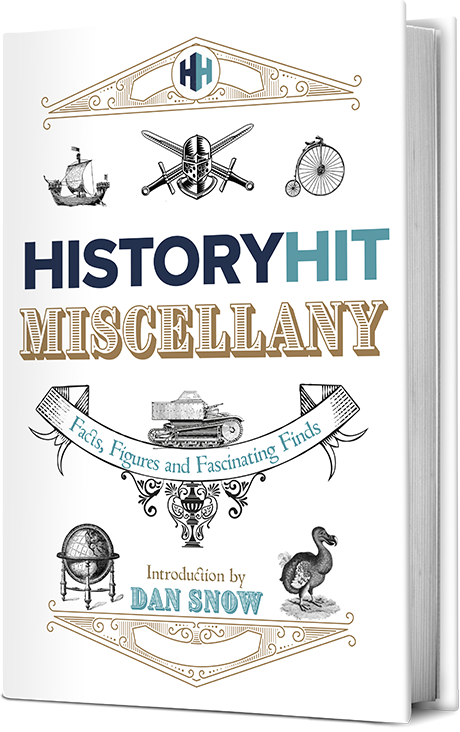
The History Hit Miscellany of Facts, Figures and Fascinating Finds
- South Africa
Voortrekker Monument
Pretoria, Gauteng, South Africa
The Voortrekker Monument in Pretoria commemorates South Africa’s Boer pioneers.

Peta Stamper
05 jul 2021.

About Voortrekker Monument
The Voortrekker Monument in Pretoria, South Africa, commemorates the exodus of the Boers – Voortrekkers meaning ‘pioneers’ – from the Cape Colony from 1835 and 1854. This enormous granite structure on a hilltop was declared a National Heritage Site in 2011 and features as one of our top Tourist Attractions of South Africa .
Voortrekker Monument history
Sparked by the British abolition of slavery in all their colonies in 1834, the ‘Great Trek’ resulted in the creation of several republics and laid the foundations for the modern layout of South Africa. The Great Trek also resulted in conflicts between the Boers and the Zulus, particularly the Battle of Blood River , which the Voortrekker Monument also commemorates.
An idea for a monument was first raised in 1888, yet it would not be until 1931 when the Sentrale Volksmonumentekomitee (SVK) was formed and organised construction. The cornerstone for the monument was laid in 1938 by three descendants of the Voortrekker leaders.
Voortrekker Monument today
Reaching 40 metres high and sharing features with the French Dome des Invalides and the German Volkerschlachtdenkmal, the Voortrekker Monument is comprised of a vast granite structure surrounded by 64 ox-wagons – a symbol of Voortrekker practices – and is flanked by numerous statues of historic figures such as Boer leader Piet Retief.
Inside the Voortrekker Monument is its large Hall of Heroes housing a historical frieze depicting not only the history of the Trek but references to everyday life and culture of the Voortrekkers. The building also houses a small museum of Voortrekker history. Those who are keen to climb to the top of the monument are rewarded with fantastic views across the surrounding nature reserve.
Getting to the Voortrekker Monument
Just outside of Pretoria, you can easily find the Voortrekker Monument by car off the R101 (Pretoria Main Road) heading south. Alternately, get the Centurion, Valhalla or Voortrekkerhoogte buses to Monument Gate 2 on Trichardt Road.
Featured In

South Africa Historic Sites
Known for its natural beauty, wide-ranging history, and rich diversity, South Africa is home to a number of interesting historical sites. Here's our pick of 10 of the best.

Boer War Sites
As the largest and most costly war that the British fought between the Napoleonic Wars and World War One, the Boer War has left behind a number of historic sites. Here's 10 of the best.

Related Articles

10 Facts About Catherine the Great

What Was the Significance of the Battle of Navarino?
Watch and listen.

Ghost Ships: Forgotten Wrecks of the River Dart

American Revolution – The Boston Tea Party
You may also like.

The World’s 10 Best Dinosaur Museums

15 of the Most Haunted Places in the World

5 Poignant Historical Sites of South African Apartheid

10 of the Best Historic Sites in South Africa

10 South African Boer War Battlefields and Memorials

10 Key Historic Sites from the British Empire

Rorke’s Drift

Ladysmith Siege Museum

Isandlwana Battlefield

Robben Island

Anglo-Boer War Museum

The Nelson Mandela Museum

Battle of Blood River Memorial
Voortrekker Monumentality: a digital archive
- The Voortrekker Monument
The Voortrekker Monument Frieze
- Stages of Production
- Perspectives
The Voortrekker Monument frieze depicts what became known as the Great Trek in southern Africa (1835-52), when Dutch-speaking pioneers (Voortrekkers) left the Cape, then under British rule, to seek independence in the hinterland of the sub-continent. Here the foundation myth of Afrikanerdom was given permanent visual form for the first time. The making of the frieze – a 92-metre series of 27 marble reliefs with some 200 life-size figures – was an enormous task that stretched over more than a decade (1937-50). Set up inside the Monument’s Hall of Heroes, which was designed to house the frieze, it is mounted at eye level, immediately drawing the viewer’s gaze. The different categories established here are aimed to provide an understanding of this process and something of the context from which it arose. The first category focuses on maps, together with site and city plans, which show the places where the stories pictured in the frieze were located. The next category provides diagrams, plans, tables and synopses that help to explain the chosen episodes from the Great Trek represented in the frieze, and their layout in the Monument.
To introduce the frieze itself, a selection of photographs is included in ‘Views of the Frieze’. Attention then turns to its design and making. The section on ‘Designing the Frieze’ presents documents planning what the frieze might comprise and how it would be laid out, then sketches made in 1937 by the Afrikaner artist W.H. Coetzer for 22 scenes. After a delay caused by World War II, the actual making of the sculptural frieze began. Four sculptors were appointed in 1942, Peter Kirchhoff (a German immigrant), Frikkie Kruger, Laurika Postma and Hennie Potgieter (all Afrikaners). They worked together at Harmony Hall in Pretoria, drawing on local people for models: two categories provide photographs related to the artists and the place, as well as the models. ‘Making the Frieze’ was a complex process and, to set it out clearly, several sections have been created, one for each stage. The individual sculptors first made a number of clay maquettes on their own, one-third of the size of the final panels. Once they had been cast in more durable plaster (the form in which they have survived), the maquettes were set up around the workshop as a mini frieze mimicking their later layout in the Hall of Heroes. The maquettes were upscaled by carpenter Hendrik Ploeger to make a wooden armature on large backboards. Then, under the guidance of the original designer, the sculptors worked collectively to make the full-scale reliefs in clay. Again, these were cast in plaster, now to be set up in the Monument itself so that they could be judged in situ and any adjustments made. Neither clay nor plaster has survived, but an excellent record of the former was made by Pretoria-based photographer Alan Yates as they were completed in Harmony Hall. For the lost plaster versions, we have little more than newspaper photographs.
The plaster casts were sent to Italy from 1948 to be copied in marble by a team of skilled marble sculptors in the Florence studio of Romano Romanelli, using high-quality Querceta marble from quarries situated south of Carrara. Each of the marble scenes is treated in detail in the next sections. Finally, they were shipped back to South Africa and installed in the Monument during 1949 and 1950, not all of them in time for the Inauguration in December 1949. In a subsequent section, ‘Photography, Light, Material, Form, Surface’, we collected photographs that invite the viewer to ponder some of the preconditions of photography, compare photographs of the different media used and consider their effect on the form of the reliefs, as well as the changes created by different light conditions. A final section provides comparative material, such as other relief sculptures and artworks that might have been influential, as well as pertinent documents and artefacts related to the stories portrayed in the sculptures, and the (imagined) landscapes in which a number of them occurred.
Historical Maps, Site and City Plans
Diagrams, Plans, Synopses
Views of Completed Marble Frieze
Photography, Light, Material, Form, Surface
Designing the Frieze
W. H. Coetzer Drawings
Making the Frieze
Sculptors Clay and Plaster Workshop (Harmony Hall)
Frieze Models
Marble Workshops (Studio Romanelli) Florence, Italy Querceta quarry
Wooden Armature for Full-Size Clay Reliefs
Full-size Clay Reliefs
Full-size Plaster Casts
Marble Scenes, Development, Context
Presentation
Soutpansberg
Delagoa Bay
Inauguration
Negotiation
Blydevooruitsig
Debora Retief
Murder of Retief
Teresa Viglione
Marthinus Oosthuizen
Women Spur Men On
Blood River
Church of the Vow
Death of Dingane
Installation of Marble Frieze
Comparative Material
Relief Sculpture
Sculptures, Paintings, Drawings, Photographs
Artefacts and Documents Referring to Monument or Great Trek
- Skip to primary navigation
- Skip to main content
- Skip to primary sidebar
- Skip to footer
KidsKonnect
Reading Comprehension Cause and Effect Context Clues Compare and Contrast
Noun Worksheets Writing Prompts Compound Words Figurative Language
The Wizard of Oz Hans Christian Andersen Types of Writing Text Structure
Literary Devices
Alliteration Hyperbole Metaphor Irony
Subject Verb Agreement Poetry Climax Rhyme
View all reading worksheets
Action Verbs Tragedy Transition Words Phonics
View all writing worksheets
Dramatic Irony Cacophony Anaphora Setting
View all literature worksheets
Abbreviations Transition Words Conclusion Situational Irony
View all literary device worksheets
Women’s History
Inspirational Women Women's History Month First Lady of the US Women's Equality Day International Women's Day
View all Women's History worksheets
American Revolution
American Revolution Patriots & Loyalists Patrick Henry Sons of Liberty
View all American Revolution worksheets
US Constitution US Independence Trail of Tears The Pilgrims
View all US History worksheets
Ancient History
Ancient China Ancient Mayan Ancient Rome Ancient Aztec
View all Ancient History worksheets

World History
Roaring Twenties Industrial Revolution Middle Ages The Renaissance
View all World History worksheets
Famous Wars
World War 1 World War 2 Vietnam War American Civil War
View all Famous War worksheets
Anne Frank Sally Ride Neil Armstrong Christopher Columbus
View all famous figure worksheets
Joe Biden Donald Trump Abraham Lincoln George Washington
View all President worksheets
Roald Dahl Dr Seuss JK Rowling Michael Morpurgo
View all author worksheets
Civil Rights
Rosa Parks Sojourner Truth Medger Evers Martin Luther King
Elvis Presley Johann Sebastian Bach Ella Fitzgerald Wolfgang Mozart
View all musician worksheets
Thomas Edison Albert Einstein Henry Ford Wright Brothers
View all inventor worksheets
Muhammad Ali Michael Jordan Jackie Robinson Jesse Owens
View all athlete worksheets
Nat Turner Ruby Bridges Harriet Tubman Booker T Washington Malcolm X
View all civil rights worksheets
Natural Wonders
River Nile Mount Everest Sahara Desert Mount Etna Ancient Pyramids Amazon River
Landmarks/Sights
Mount Rushmore Statue Of Liberty White House Stonehenge Great Wall of China Santa Fe Trail
New York Texas South Carolina Alaska Nevada Ohio
Australia United Kingdom China Canada Argentina Brazil
Mount Fuji Mississippi River Rocky Mountains Volcano Glacier The Great Barrier Reef
View all natural wonders worksheets
Hoover Dam Bermuda Triangle Leaning Tower Of Pisa Arc De Triomphe Golden Gate Bridge Colosseum
View all landmark worksheets
California Colorado Indiana Florida Washington Georgia
View all US state worksheets
Poland Greece Philippines Japan France India
View all country worksheets
April Topics
April Fools’ Day World Autism Awareness Day International Children’s Book Day Passover Eid Al-Fitr Ramadan Patriots’ Day Rama Navami Earth Day World Book Day
View all Seasonal worksheets
Social Emotional Learning
Morals and Values Self Management Ethics Depression Relationship Skills Self-Awareneess Self-Esteem Emotions and Feelings Goal-Setting Interpersonal Skills
View all Social-Emotional Learning worksheets
Celebrations
Easter Saint Patrick’s Day Valentines Day Chinese New Year Rosh Hashanah Thanksgiving Flag Day Cinco de Mayo Beginning Of Lent Yom Kippur View all Celebrations worksheets
Remembrance
Pearl Harbor Day Veterans’ Day Memorial Day Battle Of The Somme D-Day 9/11 Anzac Day Martin Luther King Jr. Day International Women’s Day Victoria Day View all Remembrance worksheets
Camels Fox Bears Penguin Wolf Beavers Mountain Lion Red Panda Snow Leopard White Tigers Silverback Gorilla Okapi
View all mammal worksheets
Marine Life
Crabs Starfish Fish Octopus Great White Shark Dolphin Walrus Narwhal Megalodon Shark Killer Whale Beluga Whale Lionfish
View all marine life worksheets
Insects/Invertebrates/Reptiles
Millipede Praying Mantis Ladybug Ants Spider Iguana Chameleon Komodo Dragon Lizard Bearded Dragon Gila Monster Snakes
View all insect worksheets
Eagle Peregrine Falcon Snowy Owl Emu Woodpecker Albatross Swan Quail Bald Eagle Hummingbird Peacock
View all Bird worksheets
Natural World
Avalanche Flood Tsunami Natural Disasters Fossils Ice Age
View all natural world worksheets
Earth Sciences
Water Cycle Global Warming Deciduous Forests Hurricane Sandy Hurricane Katrina Global Warming
View all earth science worksheets
Food Chain Fossils Photosynthesis Cells Ecosystem Plants
View all biology worksheets
Solar System Black Holes Eclipse Stars and Constellations The Moon Comets
View all space worksheets
Chemistry/Physics
Magnetism Graduated Cylinders Solid, Liquid, Gas Gravity Light Sound
View all science worksheets
Kangaroo Horse Bear Lion Lizard Octopus
View all animal worksheets
Addition Sentences Single Digital Addition Two-Digit Addition Three Digit Addition Repeated Addition
View all Addition Worksheets
Ordinal Numbers Cardinal Numbers Rounding Numbers Odd & Even Numbers Comparing Numbers
View all Numbers Worksheets
Counting Money Subtracting Money Change Money Coin Name & Value Calculate Change (Money)
View all Money Worksheets
Number Line Single Digit Subtraction Place Value Subtraction Sentences Input & Output Tables
View all Math Worksheets
The Great Trek Facts & Worksheets
The great trek was the mass emigration of dutch, german and french huguenot (boers) colonizers of cape colony in south africa from cape colony towards the interior areas of the continent that took place from 1835 until 1840., search for worksheets, download the the great trek facts & worksheets.
Click the button below to get instant access to these worksheets for use in the classroom or at a home.
Download This Worksheet
This download is exclusively for KidsKonnect Premium members! To download this worksheet, click the button below to signup (it only takes a minute) and you'll be brought right back to this page to start the download! Sign Me Up
Edit This Worksheet
Editing resources is available exclusively for KidsKonnect Premium members. To edit this worksheet, click the button below to signup (it only takes a minute) and you'll be brought right back to this page to start editing! Sign Up
This worksheet can be edited by Premium members using the free Google Slides online software. Click the Edit button above to get started.
Download This Sample
This sample is exclusively for KidsKonnect members! To download this worksheet, click the button below to signup for free (it only takes a minute) and you'll be brought right back to this page to start the download! Sign Me Up
Table of Contents
The Great Trek was the mass emigration of Dutch, German and French Huguenot (Boers) colonizers of Cape colony in South Africa from Cape Colony towards the interior areas of the continent that took place from 1835 until 1840. The trek was done as a form of resistance against the British government and as an attempt to live independently from British rule.
See the fact file below for more information on the Great Trek or alternatively, you can download our 25-page The Great Trek worksheet pack to utilise within the classroom or home environment.
Key Facts & Information
Leading to the great trek period.
- Boers were the Dutch, German and French Huguenots who were the first colonizers of Cape Colony. They arrived in the area during the early 1650s.
- The Boers disagreed with policies the British government implemented. Policies minimizing slavery of native Africans and land colonization for white settlement were some policies implemented that the Boers protested against.
- Boers believed that British authorities favored protecting the rights of native Africans instead of theirs. As a result, rebellions were staged against British authority and in 1815, British authorities hanged 5 rebel Boers because they attempted to start an uprising against the British government for its bias towards African rights.
- The Boers believed that they would find land on the interior parts of the continent and be able to establish their own colonies that would be free from British rule.
- January 1832 Dr. Andrew Smith, a British zoologist sent to Cape Colony, and a Boer farmer went on an expedition to scout Natal as a potential colony. Natal, along with the other land areas in its radius, was portrayed as a promising area to colonize due to its topography and nearly complete absence of inhabitants.
- Around 12,0000 Boers of Cape Colony , predominantly the Dutch, decided to leave the area as a result of the rising tension with British authority
- The first group of Boers who left Cape Colony were recognized as Voortrekkers meaning early migrants. These Voortrekkers left Cape Colony in 1835 and migrated to the interior Highveld north of the Orange River. Their movement led them to be recognized as the pioneers of the mass emigration of the Boers from Cape Colony or The Great Trek.
THE GREAT TREK PERIOD
- Boers were emigrating from Cape Colony from 1835-1840.
- The Voortrekkers traveled by oxen-drawn wagons.
- Piet Retief, a prominent Voortrekker leader and commander, published a manifesto that stated reasons as to why the Boers were emigrating from Cape Colony. It was published on February 1837 in Grahamstown’s Journal
- Boers who left Cape Colony always traveled in groups consisting of families, servants, and livestock. They brought with them cases of water, dried food, clothing, some brought weapons such as spears and guns. These groups traveled under the guidance of a leader
- Some well-known leaders were Andries Potgieter, Gert Maritz, Piet Retief, and Piet Uys.
- The expedition was harsh not only because of the geographical obstacles such as the Orange and Vaal rivers that intercepted their path and the Limpopo river delta that was infested with Malarial Mosquitoes, but also because of native African kingdoms they came in contact with such as the Zulus, Matebeles, and Xhosas. The Boers and leaders of African states disagreed about land ownership and settlement resulting in several battles.
BATTLES OF THE GREAT TREK PERIOD
- On October 20, 1836 as a group of Voortrekkers led by Hendrik Potgieter made their way out of the Tarka area, they were attacked by roughly 5,000 Ndebele warriors. Under the command of Potgieter, the Voortrekkers retreated and left their livestock, specifically their cattle, behind. This is known as the Battle of Vegkop.
- Piet Retief, one of the most important leaders of the Great Trek, struck a deal with with Dingane, the Zulu king, that stated that an area of land in Natal will be given to the Voortrekkers in exchange of Retief and his troops recovering the herd of cattle stolen by Sekonyela (the chief of the Tlokwa). Despite agreement on the settlement, Dingane killed Retief and all of his comrades on February 1838
- April 1838, because of the massacre of Piet Retief and his group of trekkers, assistance from Piet Uys and Hendrik Potgieter were called for. Uys and Potgieter led their parties for battle against the Zulu to the capital of the Zulu king, Umgungundlovu. Potgieter’s troops retreated from the battlefield immediately, leaving Uys uncoordinated and alone. This led to their defeat. This is known as the Battle of Italeni.
- December 16, 1838, after several defeats from the Zulu kingdom and to end the disparity, Voortrekker forces led by Andries Pretorius entered Zululand. Positioned near the Ncome River, Pretorius’s troops were able to successfully attack the Zulu warriors. The Ncome river was red with the blood from Zulu warriors, coining the name Battle of Blood River.
The Great Trek Worksheets
This is a fantastic bundle which includes everything you need to know about the Great Trek across 25 in-depth pages. These are ready-to-use The Great Trek worksheets that are perfect for teaching students about the Great Trek which was the mass emigration of Dutch, German and French Huguenot (Boers) colonizers of Cape colony in South Africa from Cape Colony towards the interior areas of the continent that took place from 1835 until 1840. The trek was done as a form of resistance against the British government and as an attempt to live independently from British rule.
Complete List Of Included Worksheets
- The Great Trek Facts
- You’re Out of Here
- Backpacking Through Time
- The Ultimate Match
- You Give Me Meaning
- Lead the Way
- Get in Line
- The Outcome
- Compare and Contrast
Link/cite this page
If you reference any of the content on this page on your own website, please use the code below to cite this page as the original source.
Link will appear as The Great Trek Facts & Worksheets: https://kidskonnect.com - KidsKonnect, June 10, 2021
Use With Any Curriculum
These worksheets have been specifically designed for use with any international curriculum. You can use these worksheets as-is, or edit them using Google Slides to make them more specific to your own student ability levels and curriculum standards.
Related Resources
KidsKonnect is a growing library of high-quality, printable worksheets for teachers and homeschoolers.
Home Facts Privacy About Blog Contact Terms
Safe & Secure
We pride ourselves on being a safe website for both teachers and students. KidsKonnect uses a secure SSL connection to encrypt your data and we only work with trusted payment processors Stripe and PayPal.

'Father Knows Best' Behind-The-Scenes Facts Even The Biggest Fans Might Not Know
Posted: April 29, 2024 | Last updated: April 30, 2024
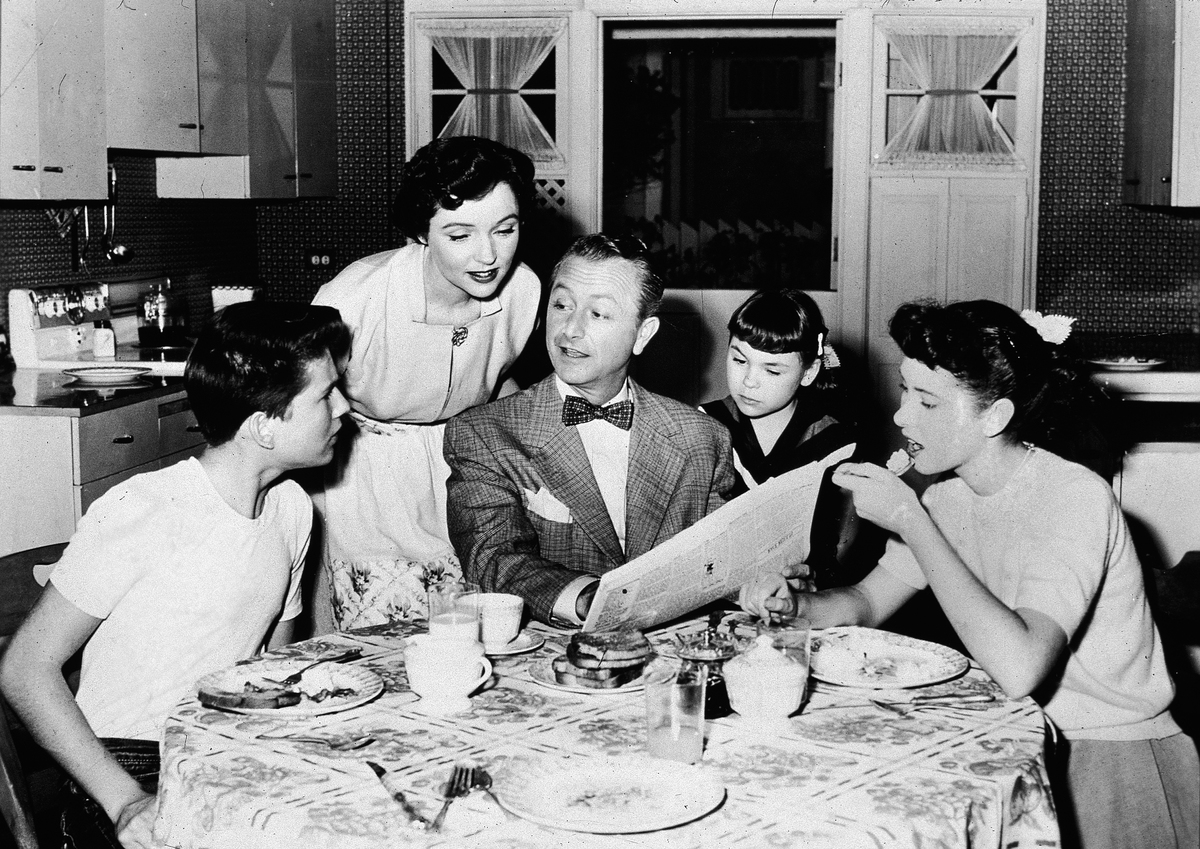
Since it released in 1954, Father Knows Best became the mold for modern sitcoms. Even after the show ended, it continued to air on primetime and appeal to families everywhere. Throughout the decades, cast and crew have revealed some fun, surprising facts about the sitcom.
Even die-hard fans might not know about the episode created for the U.S. government, or which parts of the set were real home appliances. If you've ever enjoyed Father Knows Best , check out these behind-the-scenes facts about the historic show. Just read on to learn more!
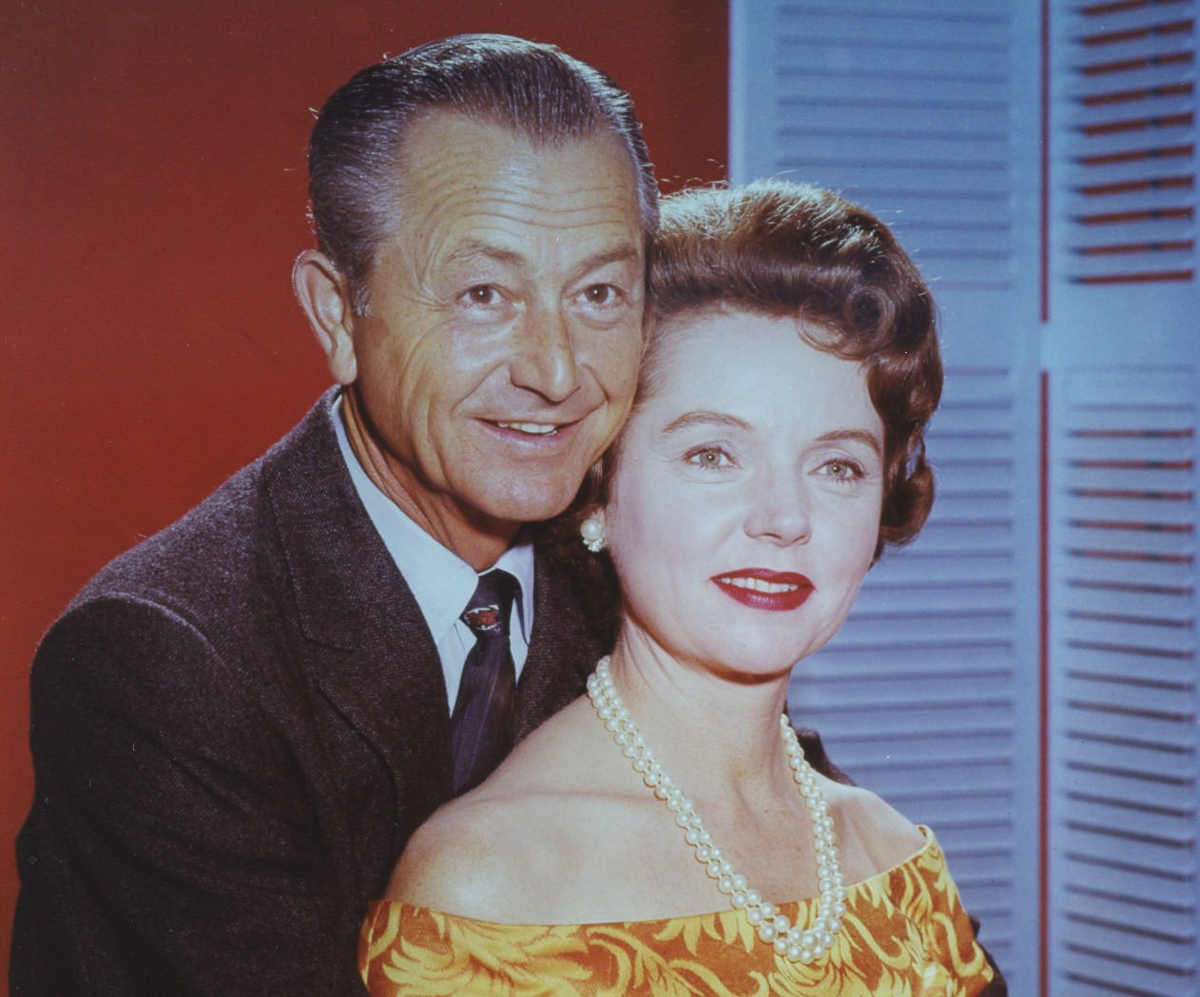
Jim's Character Was Much Different In The Radio Show
The radio version of Father Knows Best was much darker than the TV show. Jim Anderson acted far more rude to his family, often calling his kids names. For instance, he once said, "What a bunch of stupid children I have." He also told Bud to, "Go jump in a lake."
Jim also had a sarcastic mood, which spread throughout the entire family. At the time, his domineering behavior was typical of radio show characters. In contrast, Margaret acted as the paradigm of patience and reason, with rare exceptions.
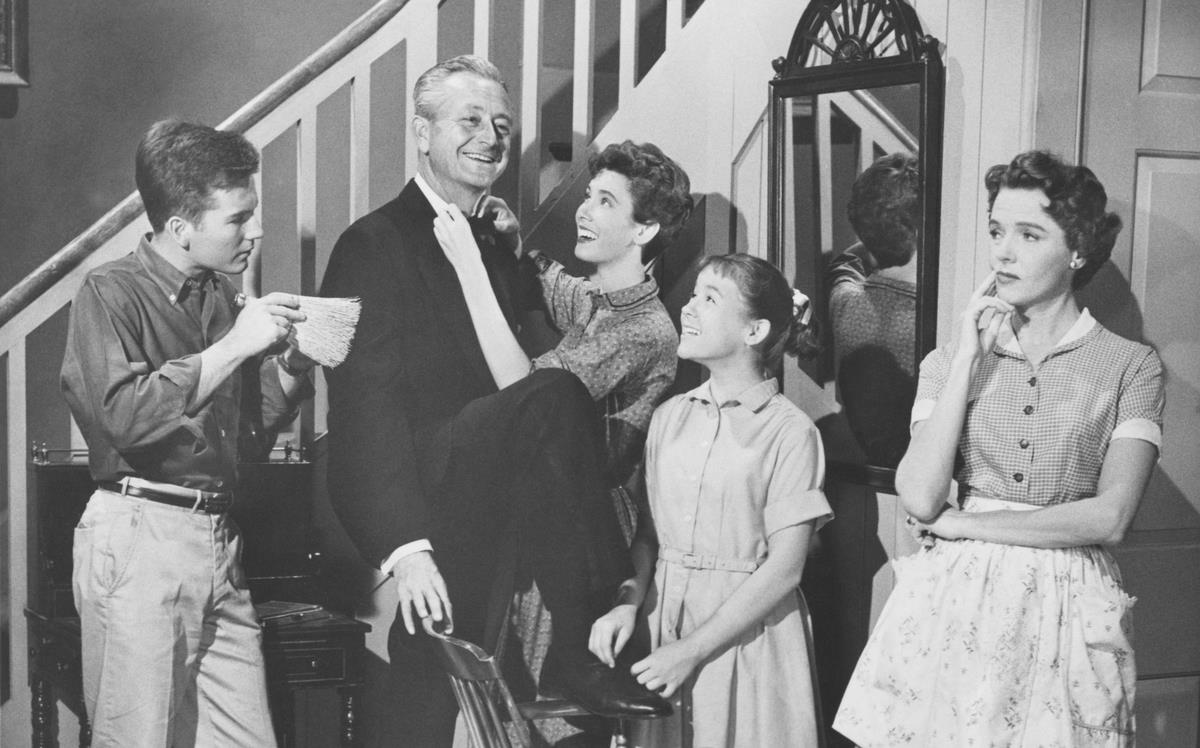
The Pilot Episode Featured An Entirely Different Cast
When Father Knows Best first aired on May 27, 1954, it wasn't called Father Knows Best . It was originally named The Ford Television Theatre , and this name only appeared in one episode: "Keep It in the Family," the series' pilot.
The pilot included an entirely different family. The only actor who remained in Father Knows Best was Robert Young, who played the head of the Warren family. Other actors in the pilot include Ellen Drew, Sally Fraser, Tina Thompson, and Gordon Gerbert. CBS didn't air the first real episode of Father Knows Best until October 3rd of that year.

Both Margaret And Betty Were On Star Trek
Besides her role as Margaret, Jane Wyatt is popularly known for playing Amanda, Spock's mother on Star Trek . She appeared in the episode "Journey to Babel" and later in the 1986 film, Star Trek VI: The Voyage Home . However, some fans don't know that Elinor Donahue, who played Betty, also appeared on Star Trek .
On the episode "Metamorphosis," Donahue played the role of Commissioner Nancy Hedford, who embodies the entity called "The Companion." Jane Wyatt appeared on the very next aired episode. While the actresses weren't in the same episode, they debuted on the same show back-to-back.
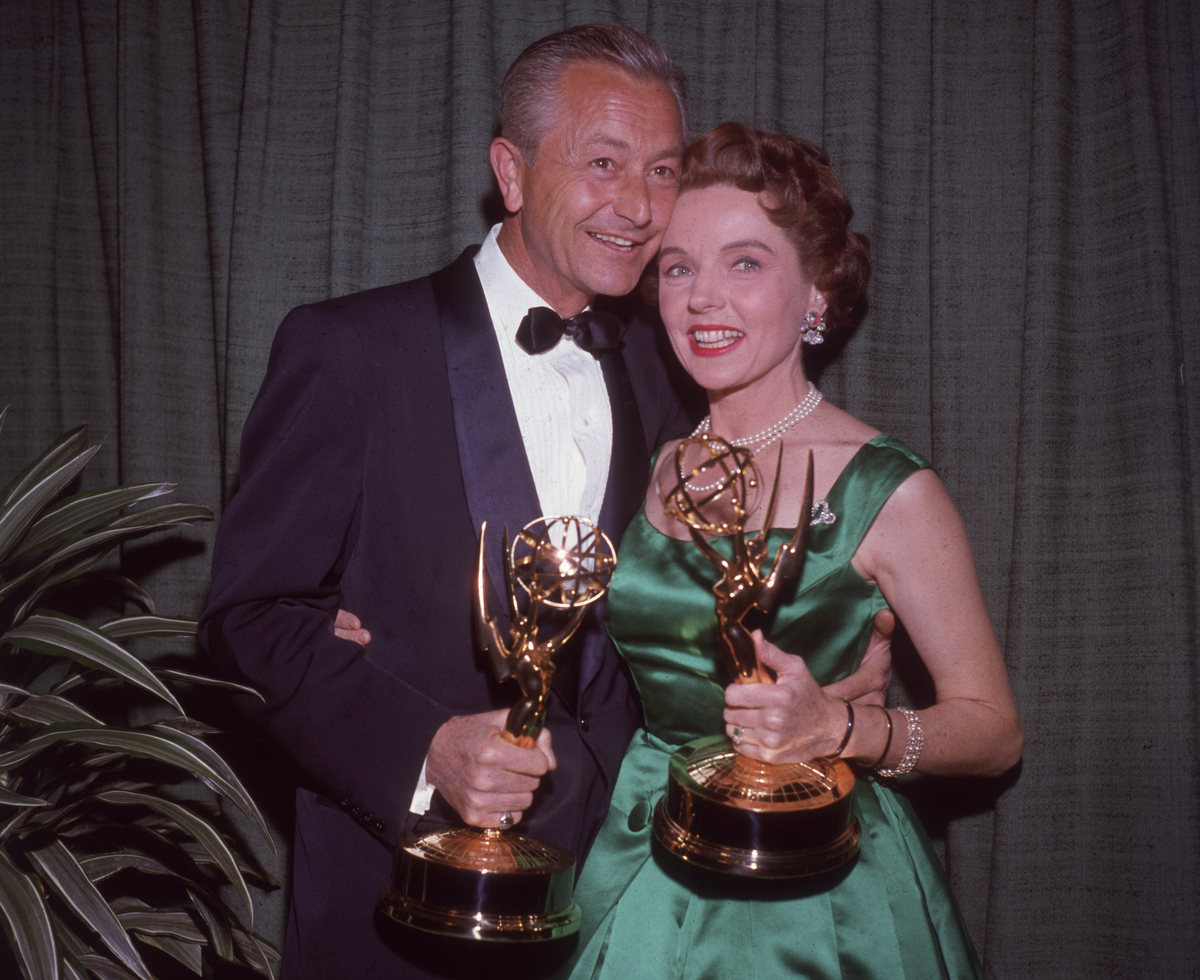
After Father Knows Best Was Canceled, It Still Ran On Primetime
Father Knows Best ran for six seasons, from 1954 to 1960. Even after it stopped, CBS continued to play reruns of the show during peak viewing hours. CBS always played the show around 7:30 p.m. or 8:00 p.m., although the days switched from Tuesday to Wednesday to Monday.
In 1962, Father Knows Best jumped from CBS to NBC. The new company played the show on even better times, including Friday and Sunday around 8:00 p.m. Few shows have remained on primetime for as long as Father Knows Best.
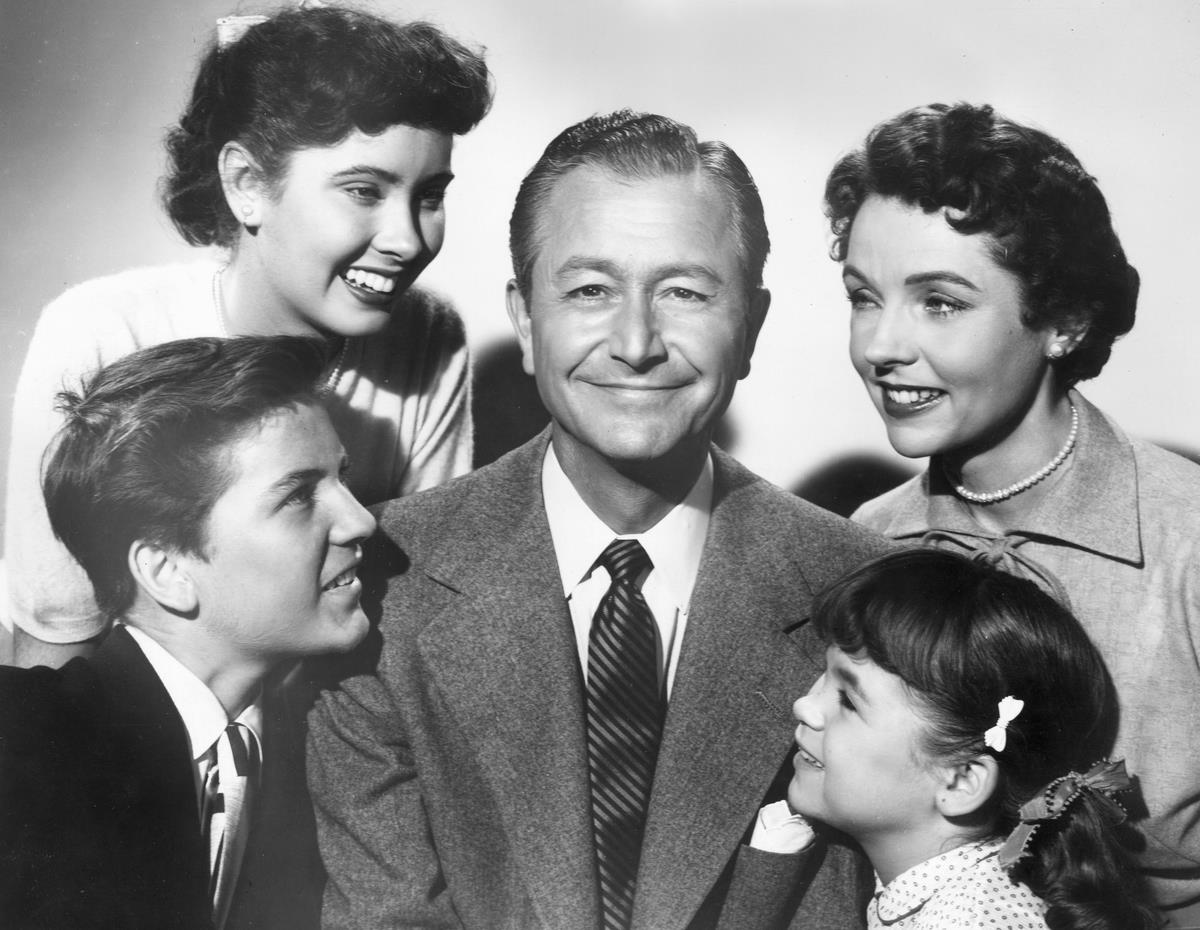
Robert Young Struggled With Depression While Filming
Many fans don't know that behind the camera, Robert Young struggled with his roles in both Father Knows Best and Marcus Welby, M.D . He grappled with acute depression that eventually escalated into alcoholism. He even said, via the LA Times, "I wasn't Jim Anderson, but it was hard for the public to accept that."
Eventually, doctors ran tests and prescribed Young medication for his chemical imbalance. He eventually recovered and spoke openly about his personal experiences. He also advanced the passage of the 708 Illinois Tax Referendum, which established a tax to support mental health programs.
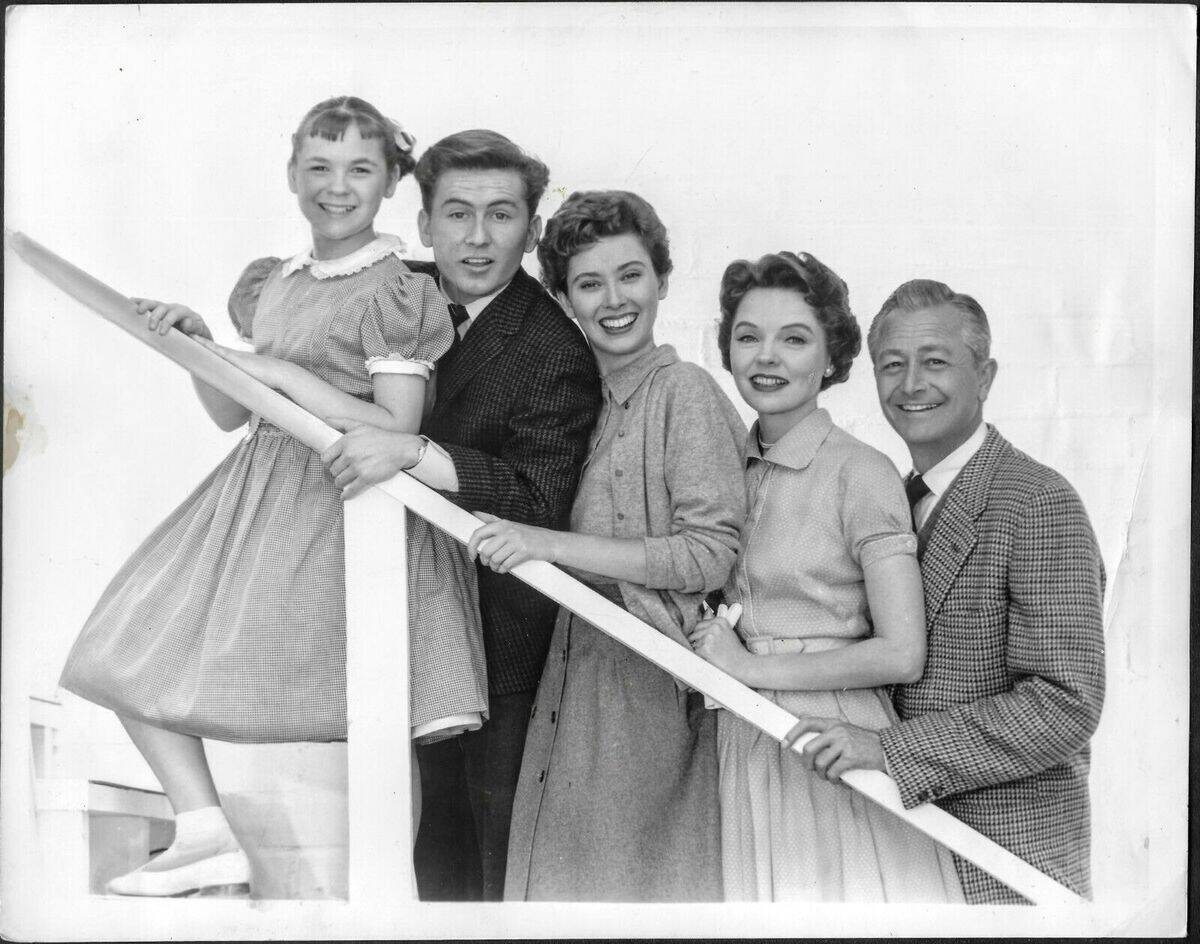
One Episode Was Made For The U.S. Government
The cast of Father Knows Best filmed a propaganda episode that never aired on NBC. In 1959, the U.S. Treasury Department commissioned the episode "24 Hours in Tyrant Land." The feature promoted the Department's savings-bond drive, and it was distributed to churches, schools, and civic groups.
In "24 Hours in Tyrant Land," the Anderson children struggle to live happily under a dictatorship. Although it never appeared on TV, you can watch it on Youtube. Some versions of the Season One DVD include the episode as well.
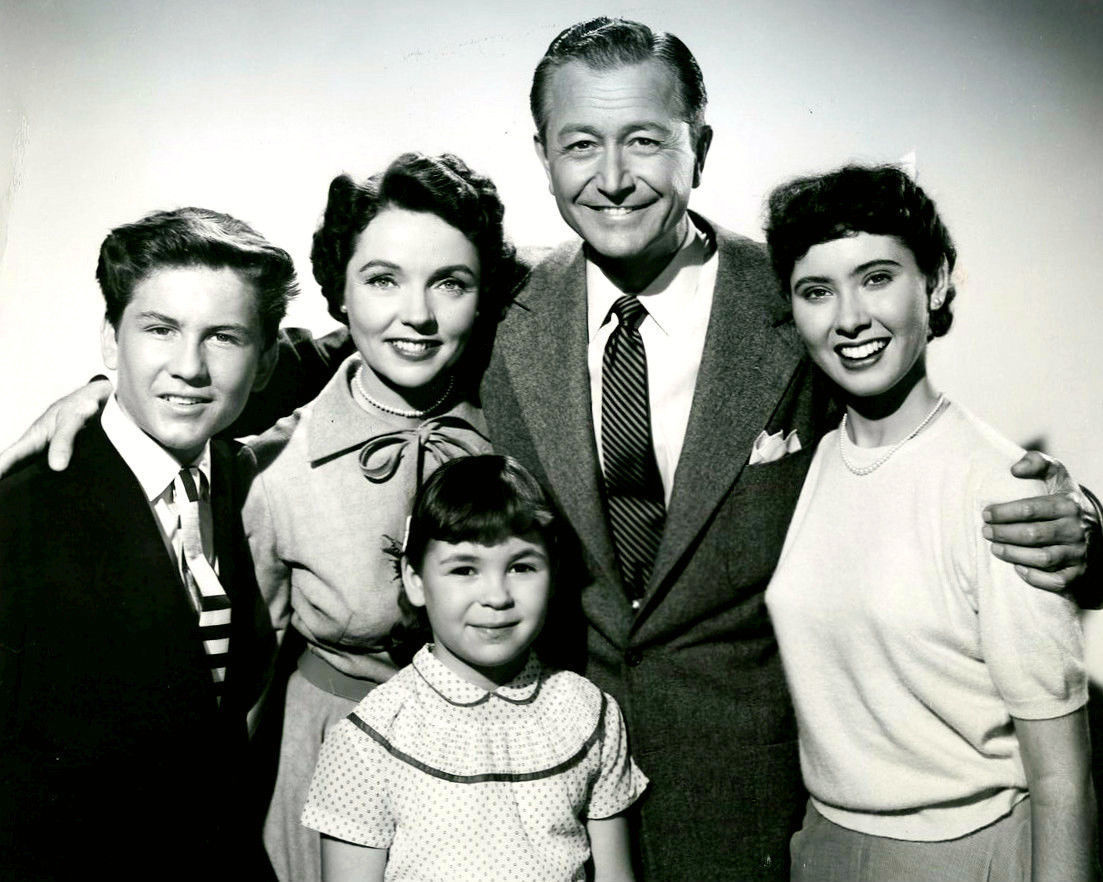
The Show Wasn't Popular At First
For its first three seasons, Father Knows Best never skyrocketed in popularity. It didn't even crack Nielsen Ratings' Top 30 list. As the show aired seasons four, five, and six, its popularity slowly climbed the charts. Around season four, it ranked number 25; by the final season, it jumped to number six.
Because Father Knows Best received its highest ratings near the end, the show continued to air through 1963. It played next to other hit shows such as The Rifleman and The Jetsons . Their remaining popularity is rare for a show, especially a sitcom.
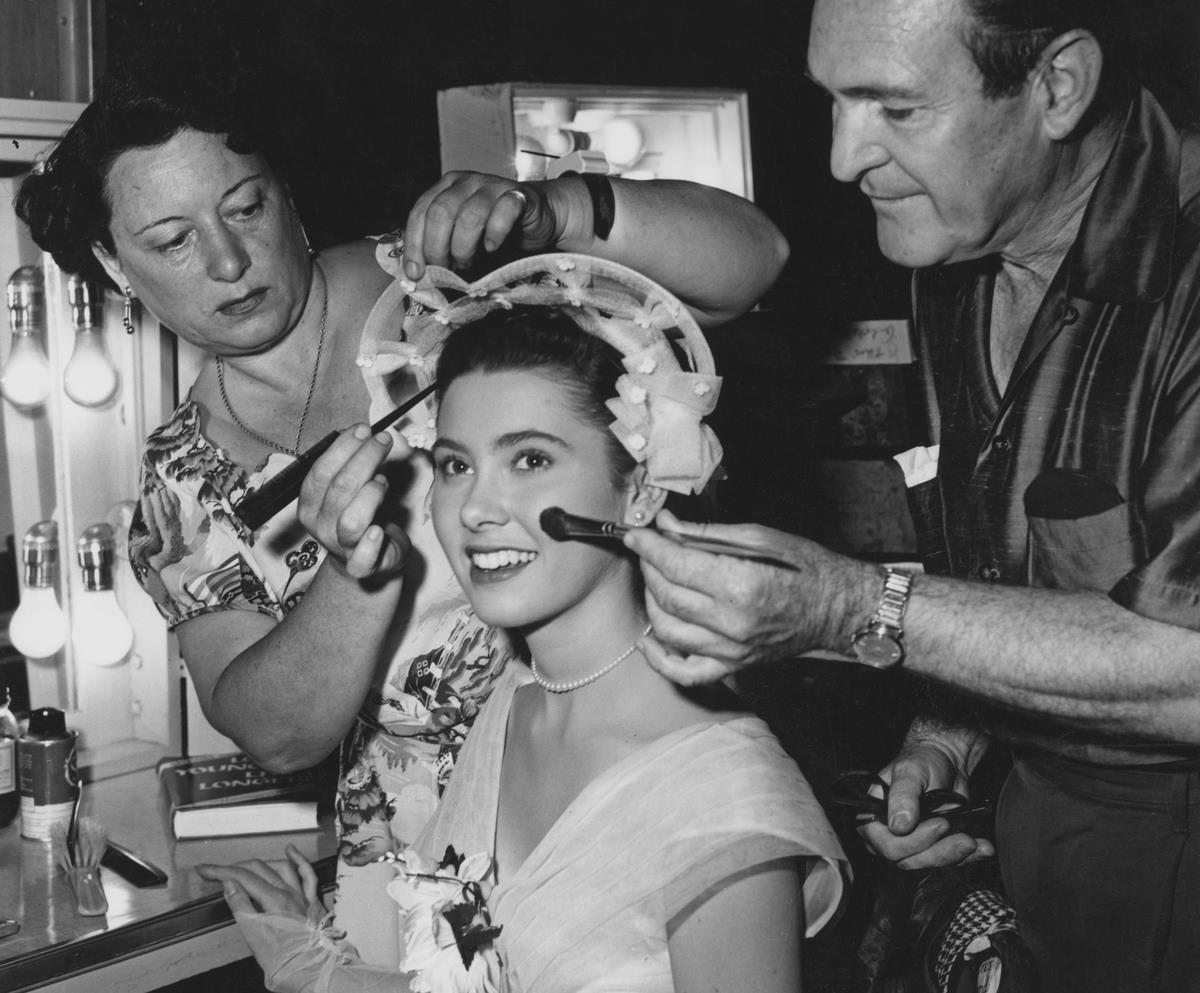
Father Knows Best Was Canceled Twice
When Father Knows Best 's first season aired, it flopped. The show's 10:00 p.m. time slot, which prevented kids from watching it, may have resulted in its low popularity. Regardless, CBS canceled it in March of 1955. Afterward, fans wrote into CBS complaining about the cancellation. This inspired the production to bring back Father Knows Best .
The show continued to run until 1960, owning an 8:30 p.m. time slot almost the entire time. Around that time, Robert Young grew tired of playing Jim Anderson. He retired, and Father Knows Best ended for good.
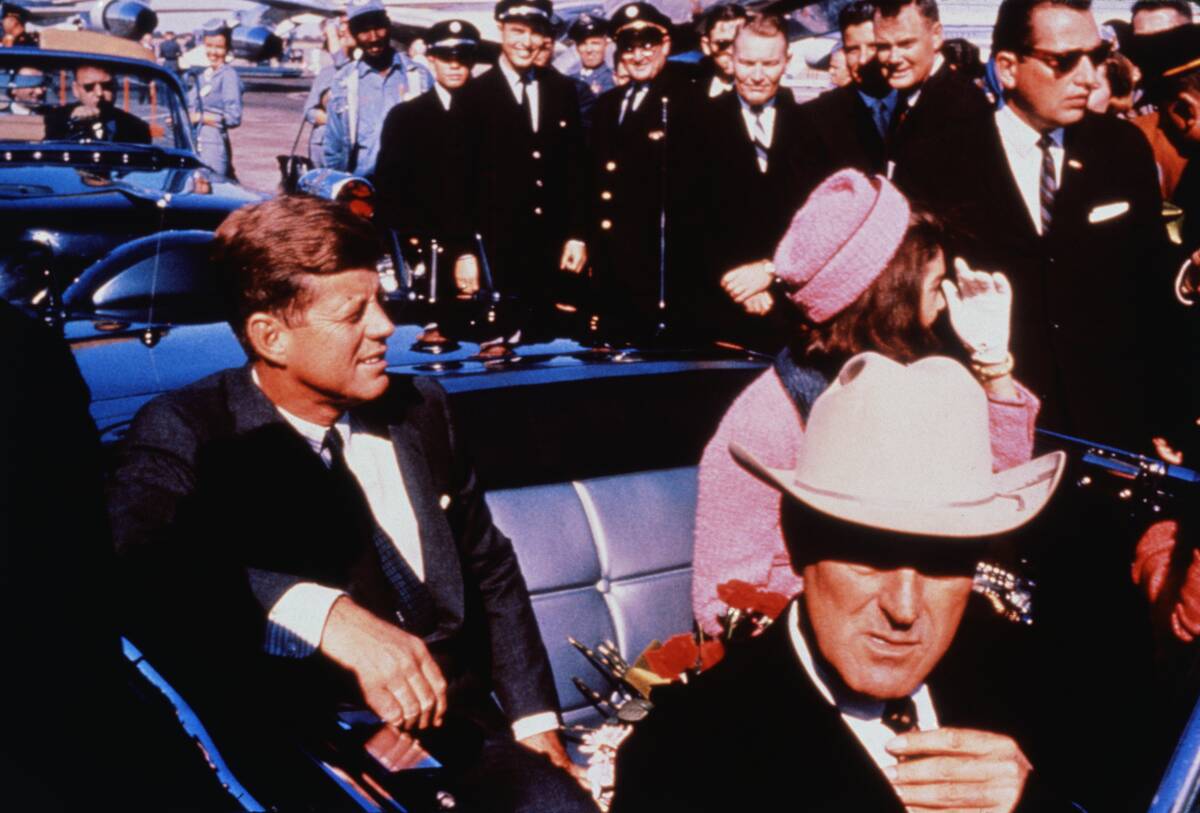
Americans Watched The Show While President Kennedy Got Shot
In 1963, ABC continued to air Father Knows Best and played reruns during the daytime hours. On November 22, many Americans in the Mountain Time Zone were finishing the episode "Man About Town." Around 12:30 p.m., the broadcast broke out about President John F. Kennedy.
President Kennedy was shot around 12:30 p.m., and pronounced dead at 1:00 p.m. Some Father Knows Best fans will forever associate "Man About Town" with one of America's most shocking assassinations. You can watch the full broadcast, including the first seven minutes of the episode, on Youtube.
The Anderson's Kitchen Served The Entire Production Team
Unlike other TV sets, where all the furniture is fake, the kitchen in Father Knows Best was real. Every morning, staff made sweet rolls and coffee to share on set. Other members of the production team stored their lunches in the refrigerator. Although you can't distinguish color in the show, the kitchen displayed real red wallpaper, blue counter-tops, and white cabinets.
The rest of Columbia Pictures's $40,000 set was fake. The production team used one area for all four bedrooms, where they interchanged wallpaper and furniture in between scenes. Stage 11 (not Stage 10, as some sources claim) also included a patio, driveway, and garage.

A Real Housewife Was In The Father Knows Best Family
Many people know Kyle Richards from The Real Housewives of Beverly Hills . Before she went on Bravo, though, Richards acted in several sitcoms, including 18 episodes of Little House on the Prairie . In 1977, Richards appeared in two movies, The Father Knows Best Reunion and Father Knows Best: Home for Christmas . She played Ellen, one of Betty's daughters that she had to raise on her own.
Richards didn't join the American housewives until 2010.
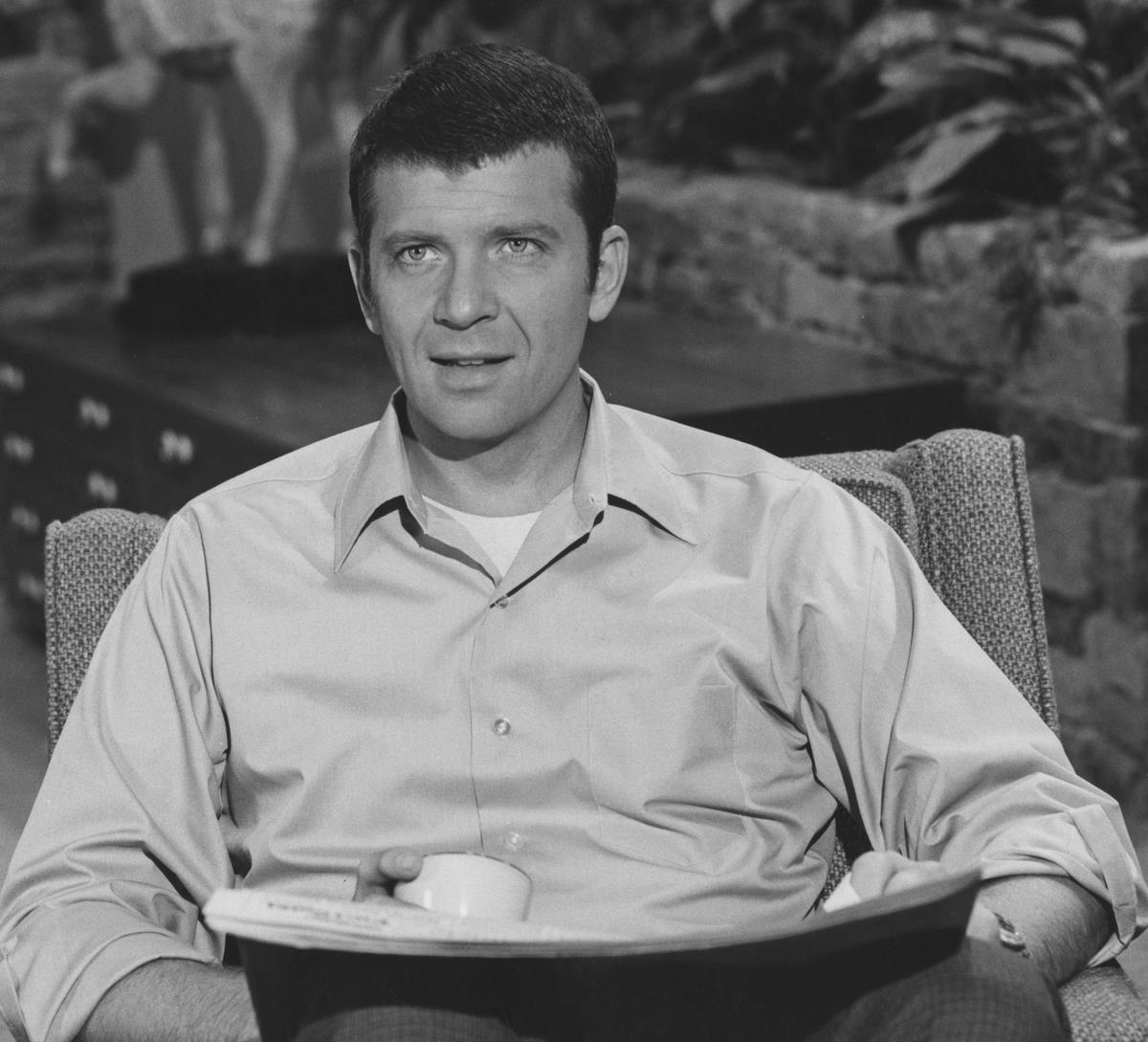
Four Other Sitcom Dads Appeared On The Show
As Father Knows Best rose in popularity in the late 1950s, future TV dads used the show as their footstool. Robert Reed, who later played Mike Brady in The Brady Bunch , acted as Mr. Cameron in the episode "The Imposter." In "Grampa Retires," Herbert Anderson played Verle Wisman. He would later take the role of Henry Mitchell in Dennis the Menace .
In the 1958 episode "Betty, the Pioneer Woman," two future sitcom dads appeared. William Schallert, who later played Martin Lane on The Patty Duke Show , acted as Jennings. Then there was Dick York, better known as Darrin Stephens in Bewitched . He played Tom Wentworth in a Father Knows Best episode.
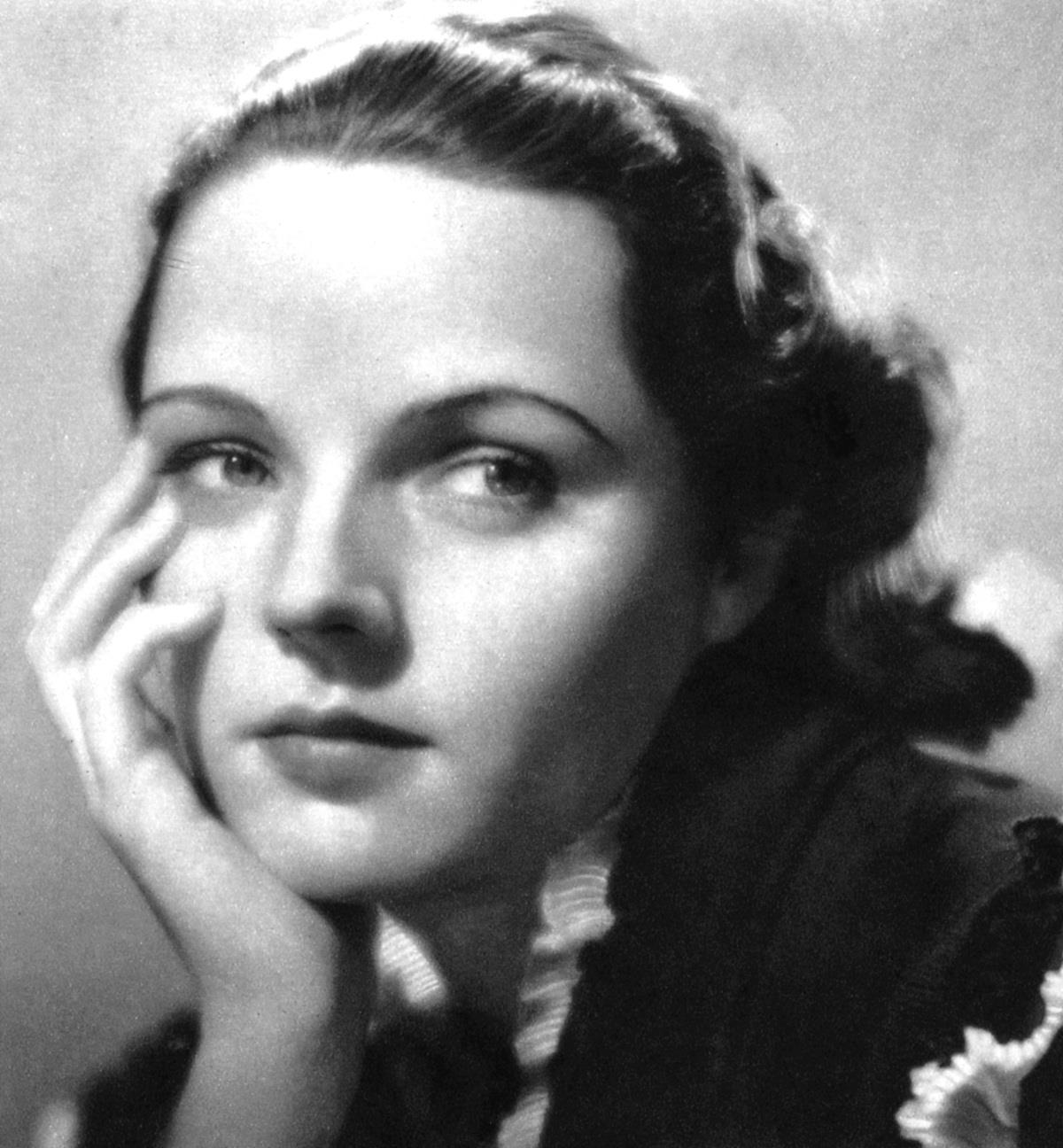
Jane Wyatt Started Off On Broadway
Jane Wyatt, who played Margaret Anderson, didn't start her acting career on TV. Her first job was on Broadway, as an understudy for actress Rose Hobart. Wyatt received favorable reviews for her understated beauty. Eventually, she transitioned to Universal Pictures.
In 1934, Wyatt debuted in her first TV role in One More River. Three years later, she acted in Frank Capra's Lost Horizon. Before Wyatt joined the show Father Knows Best in 1954, she performed in None but the Lonely Heart, Gentleman's Agreement, Boomerang, Task Force , and House by the River .
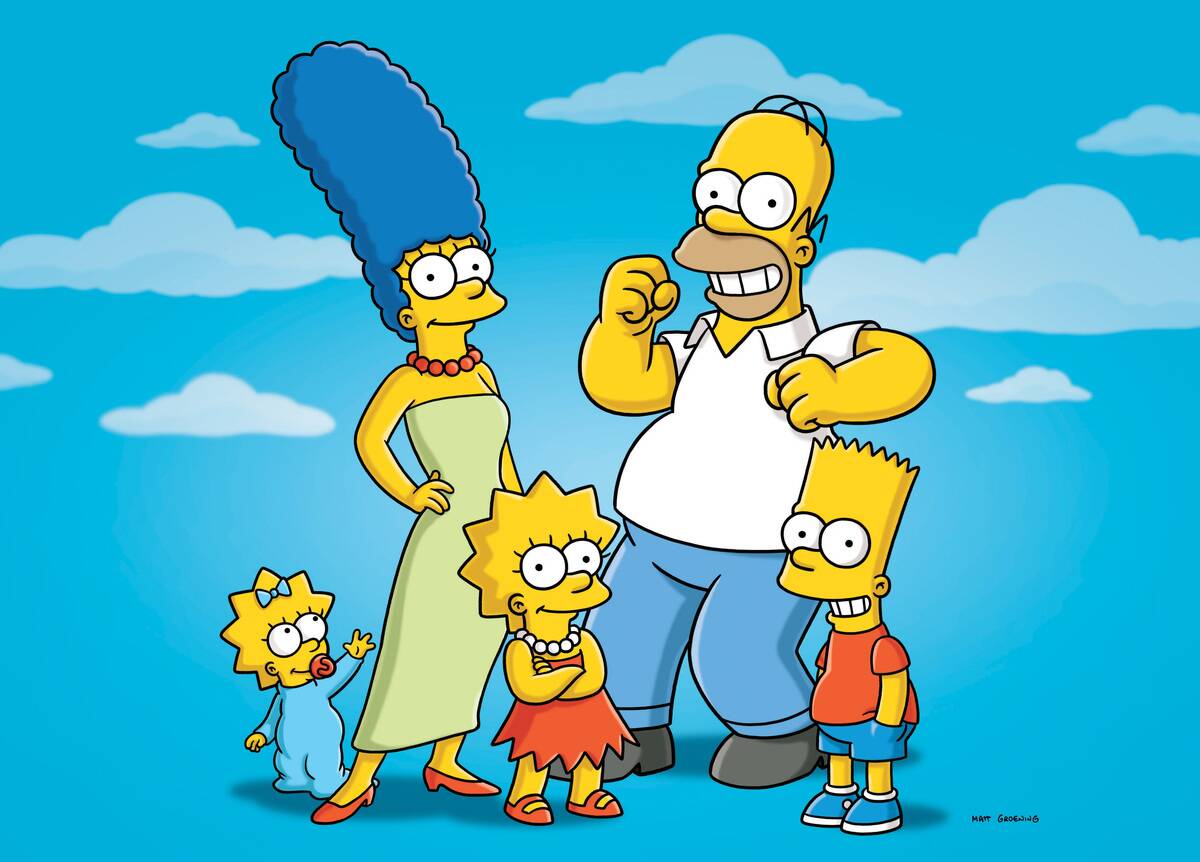
Do You Know The Anderson's Address?
Most Father Knows Best fans know that the Anderson's lived in Springfield, although the show never specified where "Springfield" was. It was implied that Springfield sat in Midwest America, perhaps in the same location as The Simpsons .
However, few fans know the Anderson's actual address. The house sits at 607 South Mable St. in Springfield, Illinois. The house remains in that spot today. In the show, Jim Anderson worked for General Insurance Co. in Illinois. This confirms that the Anderson's did live in the same city as the Simpson's.

Wilma Flintstone Voiced The Radio Version Of Margaret
On the radio show, June Whitley portrayed Margaret Anderson. Later on, Jean Vander Pyl overtook the role. Her voice might sound familiar if you watch Hanna-Barbera cartoons; she played Wilma Flinstone in The Flintstones and Rosie the maid in The Jetsons .
Unlike Robert Young, Vander Pyl never moved on to the TV show. She remained in voice work until her death in 1999. She has played various roles on Scooby Doo and The Yogi Bear Show . She only worked on Father Knows Best during the radio show's run in 1949.
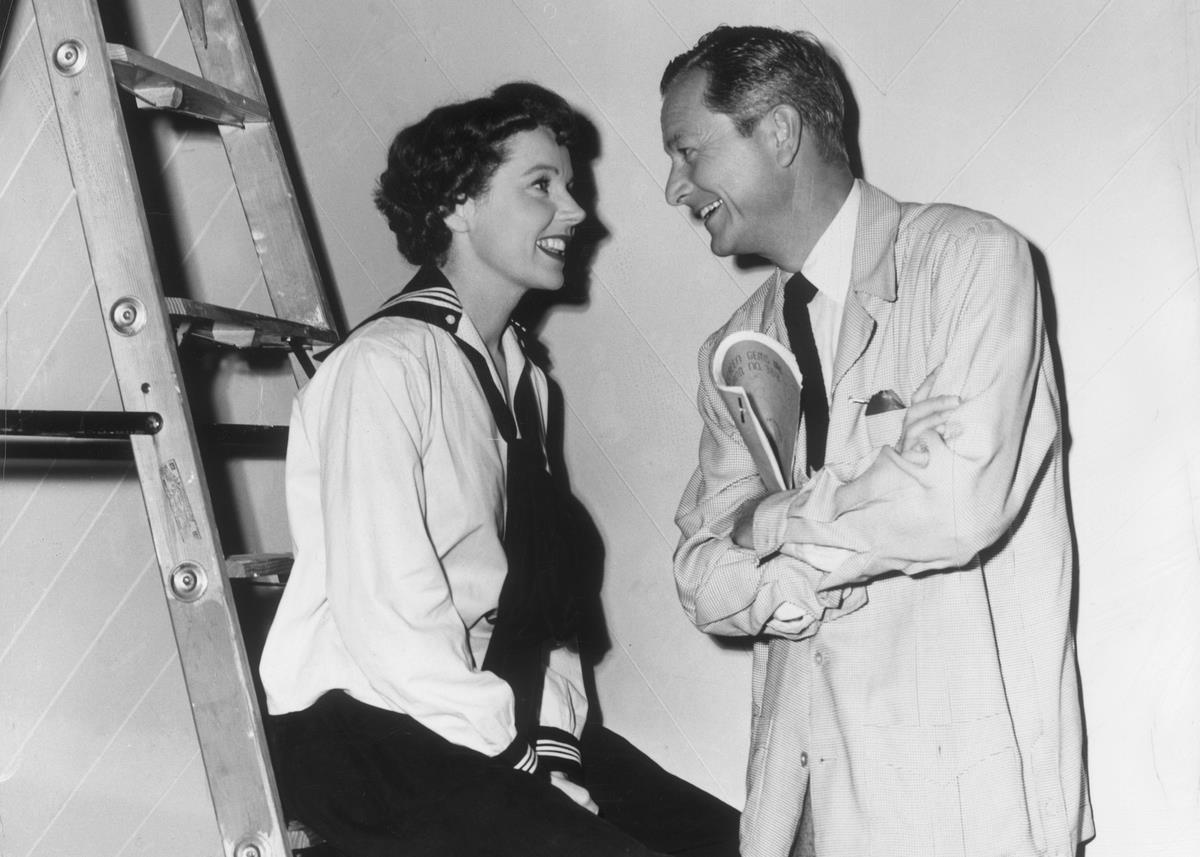
Thirteen Episodes Of The Series Are Lost
Over six seasons, 203 episodes of Father Knows Best officially aired. However, fans have theorized that thirteen more episodes have disappeared over time. Two were originals, and eleven were "flashbacks" that the producers may have cut because they didn't work as reruns.
At least one of these episodes was substituted in the DVD release. The flashback episode "Margaret Goes Dancing" with 3-4 minutes of new material did not appear in the DVD set. On the other hand, the DVD sets included 187 episodes of uncut footage that ran a full 26 minutes.
More for You
Poland Issues Grim Prediction for Russia if It Attacks
Average US annual salary by age revealed – see how you compare
The 50 Best NFL Quarterbacks of All Time
Roblox: Demon Piece - Fruit Tier List
How Much Beer You'd Have To Drink To Equal A Single Shot Of Liquor
iPhone users in 92 countries received a recent stark warning
'10-foot-tall people' discovered by archaeologists in Nevada cave
Putin's got egg on his face after showing off captured British armoured cars
‘NCIS: Hawai'i' Star Vanessa Lachey "Gutted" By Cancellation: "This Decision Was Bigger Than A TV Show"; Cast & Creators React – Update
This type of supplement may increase heart disease risk, new study finds
John Jacob Astor IV was one of the richest men in the world when he died on the Titanic. Here's a look at his life.
The Best Haircut for Your Face Shape
NFL News: Patrick Mahomes and Kansas City Chiefs could leave Arrowhead Stadium
What happens if you don't use airplane mode on your flight? Here's the answer to that, and more common travel questions.
An El Niño-less summer is coming. Here’s what that could mean for the US
At 43, I’ve finally learned how to love my size 16 curves
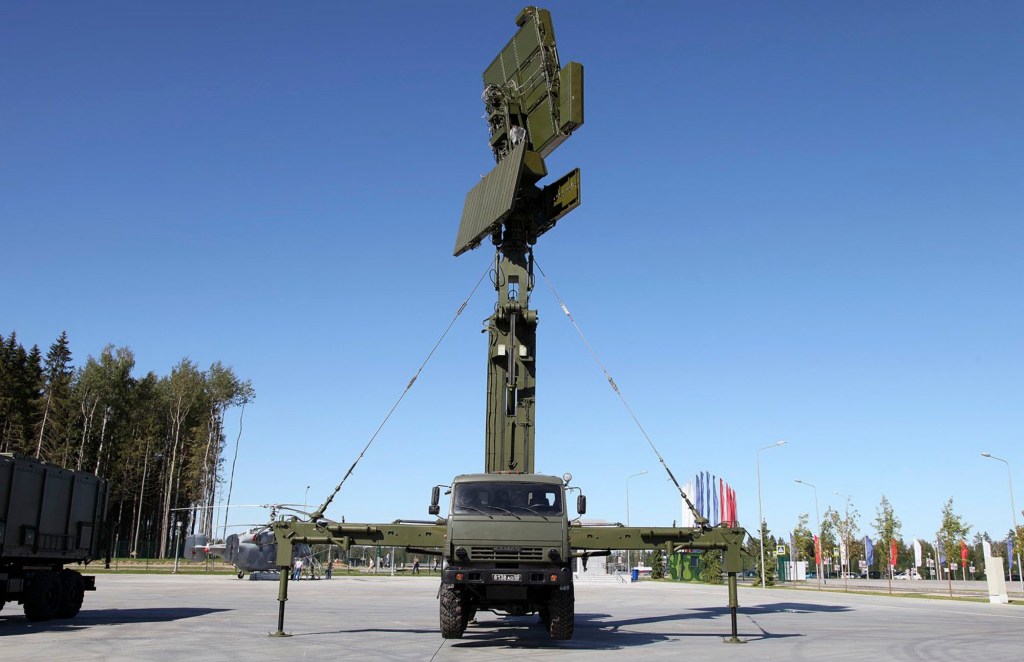
Putin humiliated after showing off captured US tank and British armoured cars
Spacecraft spots "spiders" scattered across surface of Mars
BBC Antiques Roadshow expert refuses to value Second World War painting due to back story
67-year-old who left the U.S. for Mexico: I'm happily retired—but I 'really regret' doing these 3 things in my 20s
Science | April 26, 2024
Ten Amazing Facts About Tornadoes, Explained
To prepare you for the movie “Twisters,” we’ve compiled some jaw-dropping details about the powerful phenomenon
:focal(800x602:801x603)/https://tf-cmsv2-smithsonianmag-media.s3.amazonaws.com/filer_public/33/dc/33dc6f79-65f4-47c2-b67f-8dd30d26e647/gettyimages-937849166_web.jpg)
Catherine Duncan
Staff Contributor
As looming thunderstorm clouds spit out baseball-sized hail and torrential rain, a narrow whirlwind of air stretches its way toward the ground, signaling the arrival of one of nature’s most violent phenomena: a tornado.
Also known as twisters, these violent cyclones can reach wind speeds of 300 miles per hour and blaze a path of destruction that can last from mere seconds to several hours . While most people flee or take shelter at the sight of these alarming conditions, others dive headfirst into them. Storm chasers, people who get dangerously close to extreme weather events, sometimes for scientific research, jump at the chance to pursue the ever-unpredictable tornado.
The 1996 disaster classic Twister follows a group of these daring storm chasers, a university professor and her team of students who rush toward an outbreak of severe twisters sweeping Oklahoma. Their goal: deploy a revolutionary weather alert device, aptly named “Dorothy,” within the heart of multiple tornado systems to track and possibly tame the forces of nature. After a series of disastrous attempts to deploy their invention within multiple cyclones, a final, massive tornado rips through the area. In the nick of time, the team successfully sets up their device in the twister’s center and collects crucial data.
The highly awaited sequel Twisters sees the continuation of this research nearly two decades later, with a new generation of storm chasers and technology. The story’s hesitant protagonist Kate Cooper, played by Daisy Edgar-Jones, joins forces with adrenaline junkie Tyler Owens, played by Glen Powell, as twin twisters ravage the plains of central Oklahoma. The pair races against a rival team and devastating weather conditions to conduct groundbreaking analysis. Though the film is fictionalized, its overarching circumstances—the treacherous nature of twisters and the difficulty of predicting their arrival—ring true.

In anticipation of the July 19 release of Twisters , we contacted three scientists to unravel some of the secrets wrapped within these catastrophic cyclones. Here are a few of the coolest finds we uncovered.
Supercell thunderstorms are responsible for creating tornadoes
/https://tf-cmsv2-smithsonianmag-media.s3.amazonaws.com/filer_public/05/8b/058bb8e8-210f-4339-9aa4-83fe134be1e4/supercell_thunderstorm_over_needmore_texas_may_4_2019_web.jpg)
Tornadoes are born within supercell thunderstorms , an anvil-shaped cloud with a rotating updraft called a mesocyclone. As an extremely rare weather event, only one in thousands of storms yields a supercell thunderstorm. One in five or six supercells , though, produces a tornado.
“To get a thunderstorm, we have to have an unstable atmosphere, and generally, for a tornado, we need the thunderstorms to rotate,” says William Gallus, a meteorologist at Iowa State University. “That happens if we have wind shear, which means that the wind speed and wind directions are changing as you go up.”
Warm air rises, cold air falls, rough winds whip within the storm system, and an updraft occurs. If this rotating updraft descends toward the ground, lowering itself below the storm, a tornado can emerge from the chaos.
The tornado forms as the mesocyclone accelerates from the bottom up—and the feature intensifies its rotation, in a way similar to an ice skater who pulls her arms into her body to spin faster, says Jana Houser , a supercell thunderstorm and tornado radar analysis expert at Ohio State University.
The strongest winds of the tornado are closest to the ground
/https://tf-cmsv2-smithsonianmag-media.s3.amazonaws.com/filer_public/b3/8d/b38dc04c-527b-4586-a357-66bfe4af2ca4/gettyimages-535057762_web.jpg)
In the atmosphere, the winds get stronger the higher up you go. Tornadoes reverse these conditions, with their strongest winds appearing at the lowest points. This powerful rotation starts at the ground and then floats its way upward to converge into the visible funnel cloud.
“This process happens very quickly,” says Houser, who, alongside her team and National Geographic cameras, captured the very tornadoes set to appear as background footage in the upcoming film Twisters . “In under a minute, you can go from a weak rotation to, all of a sudden, a full tornado.”
According to Gallus, computer models of tornadoes have shown that the strongest winds could lie just 15 feet above the ground—their most brutal region lining up with the height of homes and buildings.
“That’s pretty unfortunate for all of us who live on Earth, because that means that in a tornado, unlike any other weather system, the very worst winds are impacting buildings, people and trees down near the ground,” says Gallus.
Tornadoes can form anywhere, anytime
/https://tf-cmsv2-smithsonianmag-media.s3.amazonaws.com/filer_public/1f/f8/1ff86ef4-3453-48d8-9df0-a9425de1a083/tornadoalley_web.jpg)
Most tornadoes are formed in the Great Plains of the United States, in an area deemed “Tornado Alley.” Flat terrain combined with unstable conditions—warm, moist air from the Gulf of Mexico collides with dry winds drifting in from the Rocky Mountains—provides the ideal breeding ground for twisters to spawn. But tornadoes can happen almost anywhere. They have been reported in all 50 states and all continents except Antarctica, and they’ve struck major urban areas , such as Dallas, Miami and Minneapolis.
But cyclones don’t follow any sort of pattern or path, contrary to popular misconceptions. “It doesn’t matter if you’re in a downtown part of the city, in a hilly area or even a mountainous area,” says Houser. She adds that some terrain may reduce or increase the probability of tornadoes, but complete protection from the twisters can’t be guaranteed.
Similarly, while peak tornado season ranges from May to July depending on location, tornadoes can hit at any month and any time, both day and night.
Tornadoes have uniquely powerful upward motion

In most weather phenomena, the most aggressive winds blow horizontally, directing their potency outward toward the north, south, east and west, rather than upward and downward. Tornadoes defy these expectations. Things resting in the tornado’s path—the roofs of homes, cars, animals—can be suddenly whisked straight up and into the whirl of debris, victim to the sheer power of the tornado’s upward winds. According to Gallus, the strength of a tornado’s upward motion is comparable to the speed at which it moves along terrain, with 100- or 200-mile-an-hour winds shooting up toward the sky.
“That’s why the damage that a tornado does to buildings is very different than if you have the exact same mile-per-hour wind from just a thunderstorm,” says Gallus. “It’s also why you hear these stories of people or things getting picked up and seeming to levitate or fly up into the air—it’s because the tornado has such strong upward motion.”
The air pressure inside a tornado can cause just as much damage as the wind itself
/https://tf-cmsv2-smithsonianmag-media.s3.amazonaws.com/filer_public/76/8a/768a0468-e614-45f2-bfce-4fd9c9252dd6/gettyimages-545869429_web.jpg)
When visiting the site of a Missouri hospital ravaged by a tornado, Gallus recalls, a nurse he spoke with had to tilt her head a certain direction to hear. Due to the intense air pressure change caused by the tornado, her eardrum ruptured. The air pressure in the middle of a tornado can drop suddenly and strongly, as if you were riding on a plane flying up into the air extremely fast. Many people near tornadoes have reported their ears “popping” during the phenomenon. “That change in pressure is almost like nature’s way of giving you a very last warning by having your head experience this strange rapid adjustment and popping going on in your head,” says Gallus.
The change in air pressure can also create an additional force on buildings that, along with the strong winds, can intensify and quicken their destruction.
Terrain can change a tornado’s behavior
/https://tf-cmsv2-smithsonianmag-media.s3.amazonaws.com/filer_public/c0/15/c0152ae6-7858-4517-983b-82084c5eb34c/gettyimages-1321594650_web.jpg)
Researchers have a difficult time predicting when a tornado will form—and where it will go. Changing winds and differing terrain can make it hard for meteorologists chart the exact path of a twister.
“Tornadoes are incredibly susceptible to very small nuances in the land cover, in the environment, in the storm itself, and it’s very difficult, I would say impossible, to account for every single factor that could possibly go into changing what a tornado is doing,” says Houser. “They defy generalization.”
While predicating a storm is hard, meteorologists say that some features of terrain may enhance the conditions needed for a twister to form. For example, sprawling urban areas can affect thunderstorms, which, in turn, can affect tornadoes. Since cities have more precipitation on their downwind side because of the way water systems interact with urban structures, they produce more rain and more hail, and can be warmer, helping set up an environment that’s more likely for a tornado to form.
“Sometimes urban areas are warmer than rural areas due to the urban heat island. What happens if a tornado goes over a warmer city?” says Jason Naylor, an atmospheric scientist at the University of Louisville. “It looks like the urban heat island could potentially enhance the low-level updrafts in the storm and may help instigate tornadoes in a theoretical way.”
Tornadoes usually rotate counterclockwise, but they can switch directions
/https://tf-cmsv2-smithsonianmag-media.s3.amazonaws.com/filer_public/79/31/7931efbe-e744-46fb-a37a-8eb4687b8e5e/pl23_nssl0254_web.jpg)
In the Northern Hemisphere, about 98 percent of tornadoes spin counterclockwise , which meteorologists label as cyclonical. However, a clockwise-swirling tornado is not out of the question—just much less common.
The counterclockwise motion of most tornadoes has long been attributed to the Coriolis effect, the force caused by the Earth’s rotation. But, according to Houser, this is merely a myth. Tornadoes exist on “too small a space scale and time scale for the Coriolis force to affect it,” she says. Rather, the counterclockwise motion results from how vertical winds change in speed and height within the storm.
Meteorologists call clockwise tornadoes anti-cyclonic. “You get an anti-cyclonic tornado when you have a very strong surge of air within the storm,” says Houser.
Storms can produce more than one tornado at a time
/https://tf-cmsv2-smithsonianmag-media.s3.amazonaws.com/filer_public/18/b1/18b12ac6-1b65-4098-9350-f334ce1dea3b/pl23_con00002_web.jpg)
Twisters sees two groups of storm chasers unite as two different tornadoes converge over a small town in central Ohio. This event isn’t just movie magic: The same storm system can really eject multiple tornadoes at once. As winds change, the storm itself can begin to form a new tornado in a slightly different location from the original tornado—with the fledgling rotating updraft gaining power as the other twister slowly dies down. Or, if the original tornado is particularly violent , the level of agitation can churn out smaller whirlwinds that extend toward the ground.
And Houser says that other freak circumstances, such as extremely strong rotation along the edges of a storm, can also produce multiple tornadoes. A clockwise and counterclockwise tornado can even appear in the same storm system.
Tornadoes themselves can’t be forecast—only the conditions that produce them can
/https://tf-cmsv2-smithsonianmag-media.s3.amazonaws.com/filer_public/ea/d5/ead5205b-33f5-4305-b238-8714480a6bc4/may_4_0012_r_web.jpg)
The 1996 film Twister and its 2024 companion Twisters center around the same key issue: the frustrating impossibility of forecasting tornadoes. “We don’t even really try to forecast exactly when and where a tornado would hit, because we simply cannot do that ahead of time,” says Gallus.
Warnings for tornadoes are only issued when a twister is already forming and has been sighted—or indicated by weather radar—and the alerts cover an area that may be impacted.
Scientists are able to predict, however, the conditions favorable for supporting thunderstorms that spin and would be more likely to produce tornadoes. Up to a couple of hours ahead of time, when increased weather severity is detected, local television and radio news stations issue a tornado watch.
But a tornado’s intensity can’t be determined until after its wake. Scientists determine a tornado’s level of destruction by using the Enhanced Fujita Scale . The scale assesses the damage a tornado does to trees, buildings and homes. Scientists then use that information to calculate its probable wind speed. The rating system ranges from F0, the weakest cyclone, to F5, a vicious, deadly tornado, which a character in Twister deems the “finger of God.”
Climate change is affecting tornadoes

Tornado Alley is moving eastward . In the past decade, twisters have been inching their way into the Midwest and hitting states such as Missouri in record-breaking severity . Meteorologists attribute this shift to climate change.
“Now, with climate change, places that were normally too cold in the winter are finding themselves with days warm enough that you’re starting to see tornadoes at times of year, parts of the country, where they didn’t used to happen,” says Gallus.
This is caused by climate change’s impact on weather. Gallus says that climate change is making conditions warmer and more humid near the ground, which is increasing the level of instability that leads to stronger, tornado-producing storms.
According to Gallus, we may see more days that meteorologists call tornado outbreak days, where five to ten tornadoes crop up. But climate change could also decrease the frequency of days where one or two tornadoes crop up. Essentially, the number of tornadoes could be concentrated on fewer days.
“We can’t say that tornadoes are going to become stronger. We can’t say that we’re going to have less,” says Gallus. “But what we do know is, because of how the temperature is changing, we are going to start finding them in weird times of the year and places where it always used to be too cold to have a tornado.”
Get the latest Science stories in your inbox.
/https://tf-cmsv2-smithsonianmag-media.s3.amazonaws.com/accounts/headshot/Catherine_Duncan_headshot.png)
Catherine Duncan | READ MORE
Catherine Duncan is an intern with Smithsonian magazine.
Screen Rant
Why ethan peck didn't appear as star trek: discovery's mirror universe spock revealed by writer.
Star Trek: Discovery season 5 reintroduced the ISS Enterprise, and co-writer Carlos Cisco says there was talk of an Ethan Peck cameo as Mirror Spock.
Warning: This Article Contains SPOILERS for Star Trek: Discovery Season 5, Episode 5 - "Mirrors"
- Star Trek: Discovery's "Mirrors" reintroduces ISS Enterprise, but Ethan Peck as Mirror Spock didn't happen due to availability issues.
- Co-writer Carlos Cisco explains the missed opportunity for Peck's cameo in the Mirror Universe as Spock.
- Discovery's latest episode explores Mirror Universe history when the ISS Enterprise is found in interdimensional space.
Star Trek: Discovery season 5, episode 5, "Mirrors", reintroduced the ISS Enterprise, but co-writer Carlos Cisco reveals why a cameo by Ethan Peck of Star Trek: Strange New Worlds as the Mirror Universe's Spock didn't happen . In "Mirrors", which was co-written by Cisco and Johanna Lee and directed by Jen McGowan, Captain Michael Burnham (Sonequa Martin-Green) and Cleveland Booker (David Ajala) find the Mirror Universe's 23rd-century Starship Enterprise in interdimensional space and pilot it into Star Trek's Prime Universe 23rd century. However, the ISS Enterprise was abandoned, although a plaque told some of the Mirror Universe's history .
In an interview with TrekMovie , Star Trek: Discovery season 5, episode 5 co-writer Carlos Cisco says that Star Trek: Strange New Worlds ' Ethan Peck appearing in some fashion as the Mirror Universe's Spock was "considered" but didn't happen. Cisco speculates that "availability issues" may have been the reason Discovery missed out on Peck playing his goateed Mirror Universe Vulcan doppelganger. Read his quote below:
We had considered Ethan [Peck] as Mirror Spock early on but there might have been availability issues, I don’t know.
Ethan Peck did lend his voice as Spock for several episodes of Star Trek: very Short Treks .
Star Trek’s 10 Most Evil Mirror Universe Characters
What an ethan peck cameo as mirror spock in star trek: discovery would have meant, star trek: discovery reveals what happened to mirror spock.
No Ethan Peck cameo as Mirror Spock in Star Trek: Discovery season 5, episode 5 is, unfortunately, a missed opportunity. Captain Burnham did think of Spock when she was on the bridge of the ISS Enterprise . Michael told Cleveland Booker that she never met Spock's Mirror Universe counterpart, adding that he was "probably just as ruthless" as everyone else in the alternate reality. Ethan Peck appearing either as a hologram or simply via his voice would been a powerful moment for Burnham and for viewers, although perhaps it also would have distracted from Michael's mission of retrieving the next clue to the Progenitors' treasure from L'ak (Elias Toufexis) and Moll (Eve Harlow).
Michael Burnham saw footage of the older Ambassador Spock (Leonard Nimoy) in the 24th century in the Star Trek: Discovery season 3 episode, "Unification III."
Star Trek: Discovery season 5, episode 5 did reveal the fate of the Mirror Universe's Spock . After meeting the Prime Universe's Captain James T. Kirk (William Shatner) in Star Trek: The Original Series "Mirror, Mirror", Spock followed Kirk's counsel to become High Chancellor and institute reforms to prevent the inevitable collapse of the Terran Empire. Unfortunately, Spock's reforms were perceived as weakness and the Vulcan High Chancellor was assassinated. While Star Trek: Discovery season 5 wasn't originally planned as the final season, not getting Ethan Peck to cameo as Mirror Spock is a shame as, in retrospect, it would have been the last chance for a reunion, of sorts, between Captain Burnham and Spock.
Source: TrekMovie.com
New episodes of Star Trek: Discovery season 5 stream Thursdays on Paramount+
- SPORTS & TEAMS
- PERSONALITIES
NFL Draft Superlatives: Highest Upside, Red Flag, 1st to win Super Bowl & More | All Facts No Brakes
Keyshawn johnson is joined by his son keyshawn jr. where he reveals some nfl draft superlatives including the player with the highest upside, most red flags, 1st to lead their team to a super bowl and more..
Reggie Bush Gets His Heisman Trophy Back - USC legend Keyshawn Johnson reacts | All Facts No Brakes
Dk metcalf, seahawks wr humbles high school kid for trash talking | all facts no brakes, commanders hold #2 pick in nfl draft: ron rivera dishes on daniels vs. maye | all facts no brakes, can caleb williams excel with chicago bears — ron rivera makes bold prediction | all facts no brakes, dwight freeney & keyshawn johnson build the ultimate nfl defense | all facts no brakes, tom brady, brett favre are among dwight freeney’s toughest nfl qbs to sack | all facts no brakes, "tom brady wasn't a great player in college" — dwight freeney | all facts no brakes, dwight freeney reflects on pro football hall of fame nod & colts legend reggie wayne | all facts no brakes, allen iverson’s statue with 76ers receives mixed reviews | all facts no brakes, nfl bans hip-drop tackle & dwight freeney sounds off: "i would get fined" | all facts no brakes.

IMAGES
VIDEO
COMMENTS
Great Trek, the emigration of some 12,000 to 14,000 Boers from Cape Colony in South Africa between 1835 and the early 1840s, in rebellion against the policies of the British government and in search of fresh pasturelands. The Great Trek is regarded by Afrikaners as a central event of their 19th-century history and the origin of their nationhood. It enabled them to outflank the Xhosa peoples ...
Great Trek 1835-1846. The Great Trek was a movement of Dutch-speaking colonists up into the interior of southern Africa in search of land where they could establish their own homeland, independent of British rule. The determination and courage of these pioneers has become the single most important element in the folk memory of Afrikaner ...
The Great Trek (Afrikaans: Die Groot Trek [di ˌχruət ˈtrɛk]; Dutch: De Grote Trek [də ˌɣroːtə ˈtrɛk]) was a northward migration of Dutch-speaking settlers who travelled by wagon trains from the Cape Colony into the interior of modern South Africa from 1836 onwards, seeking to live beyond the Cape's British colonial administration. The Great Trek resulted from the culmination of ...
The Great Trek was a perilous exodus of pioneers into the heart of South Africa, looking for a place to call home. When the British took control of Cape Town and the Cape Colony in the early 1800s, tensions grew between the new colonizers of British stock, and the old colonizers, the Boers, descendants of the original Dutch settlers. From 1835 ...
The Great Trek was a northward migration of Dutch-speaking settlers who travelled by wagon trains from the Cape Colony into the interior of modern South Africa from 1836 onwards, seeking to live beyond the Cape's British colonial administration. The Great Trek resulted from the culmination of tensions between rural descendants of the Cape's original European settlers, known collectively as ...
The Great Trek began in 1835. More than 12,000 farmers left the Cape Colony. They took with them about 10,000 black workers, and they drove large herds of cattle. They mostly traveled on horseback and in ox-drawn wagons and were armed with muzzle-loading guns. Some of their best-known leaders were Piet Retief, Gerrit Maritz, Andries Potgieter ...
The Great Trek was a very important event in the history of South Africa . It came about because of disagreements between British and Afrikaner settlers in the colony known as the Cape Colony. As a result of the disagreements, many Afrikaner farmers moved away from the Cape Colony and established their own colonies. This was a first step in ...
Great Trek. Afrikaners left the Cape Colony (in present-day South Africa) in large numbers during the second half of the 1830s, an act that became known as the "Great Trek" and that helped define white South Africans' ethnic, cultural, and political identity.In line with Afrikaners' belief in a separate existence, developing tensions between these settlers, British authorities, and African ...
The Great Trek The Great Trek Credit: James E. McConnell, painter, (1903-1995) You might also be interested in… Lesson Save. 10 Questions for the Future: Student Action Project Students create a plan for enacting change on an issue that they are most passionate about using the 10 Questions Framework. ...
Voortrekker, any of the Boers (Dutch settlers or their descendants), or, as they came to be called in the 20th century, Afrikaners, who left the British Cape Colony in Southern Africa after 1834 and migrated into the interior Highveld north of the Orange River.During the next 20 years, they founded new communities in the Southern African interior that evolved into the colony of Natal and the ...
The Great Trek was the emigration of the Cape of Good Hope colonists in the 1830's. This followed previous isolated treks of Dutch colonists who moved inland almost from the beginning of European Settlement in South Africa.. There were a number of reasons that caused the colonists who were mainly of Dutch origin to leave their homes and settle themselves inland and away from British rule.
Piet Retief (born Nov. 12, 1780, near Wellington, Cape Colony [now in South Africa]—died Feb. 6, 1838, Natal [now in South Africa]) was one of the Boer leaders of the Great Trek, the invasion of African lands in the interior of Southern Africa by Boers seeking to free themselves from British rule in the Cape Colony.. Although he was better educated than most Boers, his combining of farming ...
The Great Trek occurred between 1835 and the early 1840s. During that period some 12,000 to 14,000 Boers (including women and children), impatient with British rule, emigrated from Cape Colony into the great plains beyond the Orange River, and across them again into Natal and the vastness of the Zoutspansberg, in the northern part of the ...
Voortrekker Monument history. Sparked by the British abolition of slavery in all their colonies in 1834, the 'Great Trek' resulted in the creation of several republics and laid the foundations for the modern layout of South Africa. The Great Trek also resulted in conflicts between the Boers and the Zulus, particularly the Battle of Blood ...
Eventually, due to a combination of dissatisfaction with the British administration, constant frontier wars with the Xhosa to the east, and growing shortages of land, the Trekboers eventually went on the Great Trek. [citation needed] Legacy Mixed-race "Afrikander" Trekboer nomads in the Cape Colony, ancestral to the Baster people.
In this video I explore the Great Trek undertaken by South African Boers in the 1840's, hope you enjoy!This video is also available in Dutch:https://www.yout...
ABSTRACT. The mass migration of the Boer farmers from Cape Colony to escape British domination in 1835-36 - the Great Trek - has always been a potent icon of Africaaner nationalism and identity. For African nationalists, the Mfecane - the vast movement of the Black populations in the interior following the emergence of a new Zulu kingdom as a ...
The Voortrekker Monument frieze depicts what became known as the Great Trek in southern Africa (1835-52), when Dutch-speaking pioneers (Voortrekkers) left the Cape, then under British rule, to seek independence in the hinterland of the sub-continent. Here the foundation myth of Afrikanerdom was given permanent visual form for the first time.
The Great Trek Worksheets. This is a fantastic bundle which includes everything you need to know about the Great Trek across 25 in-depth pages. These are ready-to-use The Great Trek worksheets that are perfect for teaching students about the Great Trek which was the mass emigration of Dutch, German and French Huguenot (Boers) colonizers of Cape ...
The Great Trek Cairn . The general story of the "Great Trek Cairn" is familiar to most UBC students and alumni - however, some interesting but possibly unfamiliar details are worth recounting. The cairn was built at the conclusion of "The Pilgrimage" or parade from downtown Vancouver to Point Grey, on October 28, 1922.
Besides her role as Margaret, Jane Wyatt is popularly known for playing Amanda, Spock's mother on Star Trek.She appeared in the episode "Journey to Babel" and later in the 1986 film, Star Trek VI ...
Paramount Global on Monday parted ways with chief executive Bob Bakish in a seismic move that sent reverberations through the media conglomerate as it actively engages in acquisition talks with ...
Science | April 26, 2024. Ten Amazing Facts About Tornadoes, Explained. To prepare you for the movie "Twisters," we've compiled some jaw-dropping details about the powerful phenomenon
The Voortrekker Monument is located just south of Pretoria in South Africa.The granite structure is located on a hilltop, and was raised to commemorate the Voortrekkers who left the Cape Colony between 1835 and 1854. It was designed by the architect Gerard Moerdijk.. On 8 July 2011, the Voortrekker Monument was declared a National Heritage Site by the South African Heritage Resource Agency.
Many countries have made great strides in global development progress but challenges remain. Download Transcript Created with sketchtool. Share. The world is healthier and wealthier today than ever before. As the world has become more connected and technologically advanced, some countries have made drastic improvements in core areas of human ...
Kate Lohnes The Editors of Encyclopaedia Britannica. Battle of Blood River (also called Battle of Ncome River), a battle that occurred in South Africa, fought between the Zulu and the Voortrekker Boers on December 16, 1838. Its proximate cause was a clash over land rights in Natal and the massacre of Voortrekkers by the Zulu king Dingane.
Star Trek: Discovery season 5, episode 5, "Mirrors", reintroduced the ISS Enterprise, but co-writer Carlos Cisco reveals why a cameo by Ethan Peck of Star Trek: Strange New Worlds as the Mirror Universe's Spock didn't happen.In "Mirrors", which was co-written by Cisco and Johanna Lee and directed by Jen McGowan, Captain Michael Burnham (Sonequa Martin-Green) and Cleveland Booker (David Ajala ...
Keyshawn Johnson is joined by his son Keyshawn Jr. on the All Facts No Brakes podcast to discuss Reggie Bush getting his 2005 Heisman Trophy back.
Keyshawn Johnson is joined by his son Keyshawn Jr. where he reveals some NFL Draft Superlatives including the player with the highest upside, most red flags, 1st to lead their team to a Super Bowl ...
He joined the Great Trek at the age of thirty-five. The town of Kroonstad was, according to folklore, named after a horse belonging to Cilliers, which drowned in a stream (Kroonspruit) where the town is situated. There is a Sarel Cilliers Museum as well as a statue of him (on the site of the Dutch Reformed Church) in Kroonstad. Numerous streets ...